
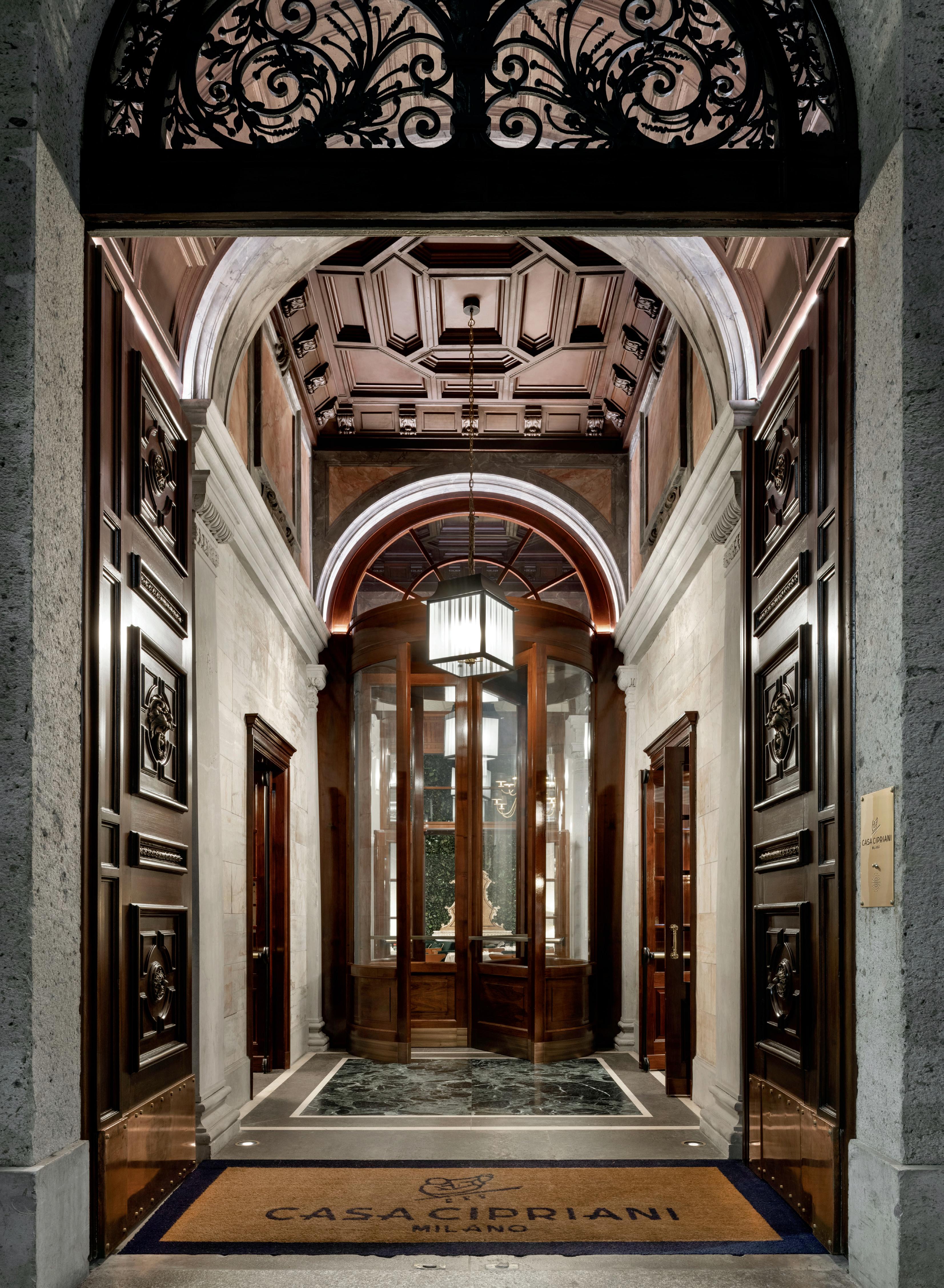



milan, over the last decade, has evolved in so many ways. The City of the Duomo, La Scala and elegant palazzos was mainly known for its industrial character, certainly its fashion houses, and iconic dishes.
It was rarely mentioned high on lists of beautiful places. Now Milan has become one of the most attractive destinations for creatives, investors, and an international crowd.
Where gray utilitarian buildings once stood, there are projects like Boeri’s Bosco Verticale, a redevelopment that has created more green space and revitalized the city. Modern innovation complements the beauty of historical treasures. Conversation between old and new, modern and classic has created the kind of vitality in which the arts flourish.
A thriving arts community has grown, with the emergence of world-class institutions like the Fondazione Prada, outposts of international galleries and new museums, attracting visitors from all over the world. Once neglected industrial areas have been repurposed as enclaves for the arts, restaurants, independent studios, boutiques, and contemporary galleries breathing new life into the city. Style and substance coexist in harmony. Our Casa Cipriani, housed in a 20th century palazzo, overlooking the oldest Milanese gardens, contributes to this exciting blend of tradition and modernity.
Our four-generation journey now continues around the world, in places that bring up special emotions; elegant residences for effortless living in vibrant Brickell Miami, an iconic Locanda on the magic island of Torcello in the Venetian lagoon and Punta del Este Uruguay with the largest hospitality project in South America. Overlooking wild beaches, the Tudor style San Rafael hotel has been reinvented to anchor a new golden age for Punta, whether to visit, call home, be entertained or even play. Old and new come together to create wonderful memories.




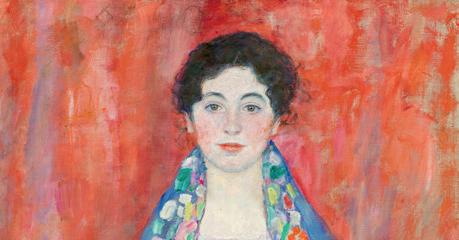





Dialogue With A Ballet Legend Susan Jaffe

The Diva at 100 Callas and Teatro alla Scala
Odyssey of Hope An Oscar nominated film

A lost masterpiece, rediscovered Klimt unveiled
Triumph of Talent Fashion meets art

Old World, New Wing
A revised perspective
Retrieving Baroque History Long lost masterpiece
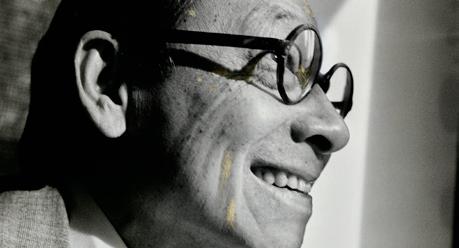
Holy Place, Scented Waters A medieval perfumery
Sir Elton John A Photography Collection Insider’s Guide To Sevilla: Rocio Crusset
Beatlemania Through Paul McCartney’s eyes
Contemporary Asian Perspective M+ honors I.M. Pei


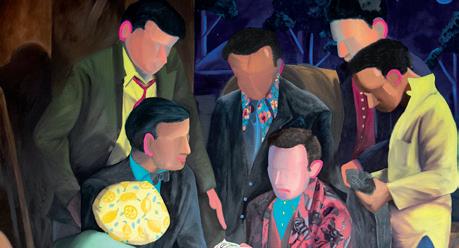
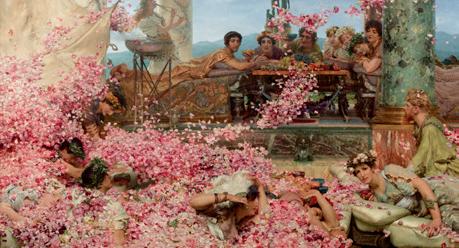
Photography Spotlight: Daniel Lauria
Graphic Novel Reconsidered Corto Maltese at Centre Pompidou
Venice Biennale: The World Reflected
Emperor Of Rome Mary Beard’s new classic

Asia Society Texas hosts “Xu Bing: Word Alchemy”, a retrospective on the work of an important figure in Chinese contemporary art, whose creations explore the way that language and words relate to socio-political perception of reality. The exhibit is at times a provocative and evolving journey through more than 50 of Xu Bing’s most important works, some of them exhibited for the first time. The show includes paintings, videos, drawings, sculptures, installations that showcase his constant creative engagement with language, calligraphy and words. The works challenge the viewer to consider how differing cultural backgrounds and their accompanying languages fundamentally color our perspectives.

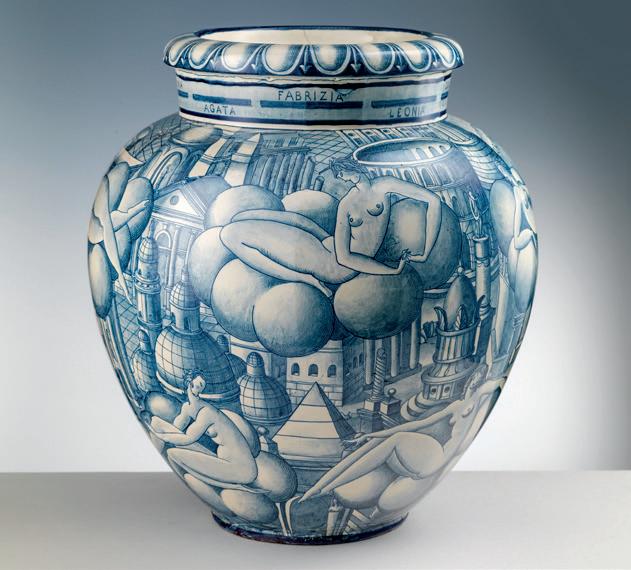

Following an extensive restoration, Venice’s Palazzo Diedo, built in the early 1700s, has reopened as one of the city’s largest contemporary art venues, spanning over 13,000 square feet. Coinciding with the 60th Biennale di Venezia, its inaugural exhibition “Janus” features site-specific works by artists like Urs Fischer and Mariko Mori, blending the historical with the modern. Restored by Berggruen Arts & Culture, the Palazzo aims to fuse its rich history with contemporary creativity.
The MIC International Museum of Ceramics in Faenza is showcasing the works of Gio Ponti, a master of modern Italian design, in an exhibit that spans his career from 1922 to 1967. Curated by Stefania Cretella, the display features over 200 items including vases and sculptures. The exhibition delves into Ponti’s innovative approach that merged functionality with elegance, highlighting his profound impact on Italian ceramics and his philosophy of design as an emotional and aesthetic experience.
Frank Lantz’s book challenges the simplistic query, “Are games art?” by redefining them as dynamic aesthetic forms. Lantz explores how games, from chess to poker, create meaning and beauty through their interactive systems, paralleling traditional arts like literature and music. This thought-provoking book positions games as a profound medium of artistic expression, offering deep analysis and insights into their role within both modern and ancient artistic contexts.

BY
EMMA ZORDANsusan jaffe has had one of the great American ballet careers of the late-20th and early-21st centuries — on-stage and off. Born in Washington, D.C in 1962, Jaffe’s natural talent was recognized from an early age. She joined the American Ballet Theatre (ABT) as a teenager, where then artistic director Mikhail Baryshnikov promoted her to lead dancer when she was only 18. Jaffe’s performances with ABT, where she remained principal dancer for 22 years, were applauded globally, critics hailing her as “America’s quintessential ballerina.” Jaffe’s illustrious international performing career spanned two decades, and she retired from dancing in 2002.
However, her passion for ballet remained undeterred. Jaffe turned her focus towards choreography and teaching, nurturing the next generation. She served as a coach and repetiteur, taught at reputed ballet schools, started university feeder programs, and gave master classes worldwide. In 2010, Jaffe took up a new challenge, becoming the dean of the School of Dance at the University of North Carolina School of the Arts. In this role, she brought significant changes to the program, revising its curriculum, enhancing the faculty and fundraising for new scholarships. Jaffe also remained close to ABT, where she served as Ballet Mistress.
Ballet Theatre’s Summer 2024 season approaches, Susan Jaffe took some time to answer some questions from Bollettino about her experiences, and about the past, present and future of ballet.
bollettino: You’ve just completed your first year as artistic director at ABT. What has been the most rewarding aspect in this position? What important lessons have you learned?
susan jaffe: The most rewarding aspect is having the opportunity to create an environment where the talented dancers and administrators can thrive. Not any less rewarding than the first point, is witnessing our dancers performing at the highest level, with exciting performances that move our audiences to their core.

In December 2022 Jaffe took the final leadership step at the famed dance company, becoming ABT’s Artistic Director. Now after a full year in her leadership role, as American
bollettino: What is your vision for ABT’s upcoming season?
Are there any themes or new directions you’re excited to explore?
susan jaffe: I am a traditionalist at heart and my first love are the classics, so we will always dance those works. But I also love new work and contemporary ways of dancing and storytelling. My vision for ABT consists of preserving the classics and dramatic works, but also incorporating the cultural changes the world has gone through over the past decade. I am currently focusing on creating choreographic opportunities

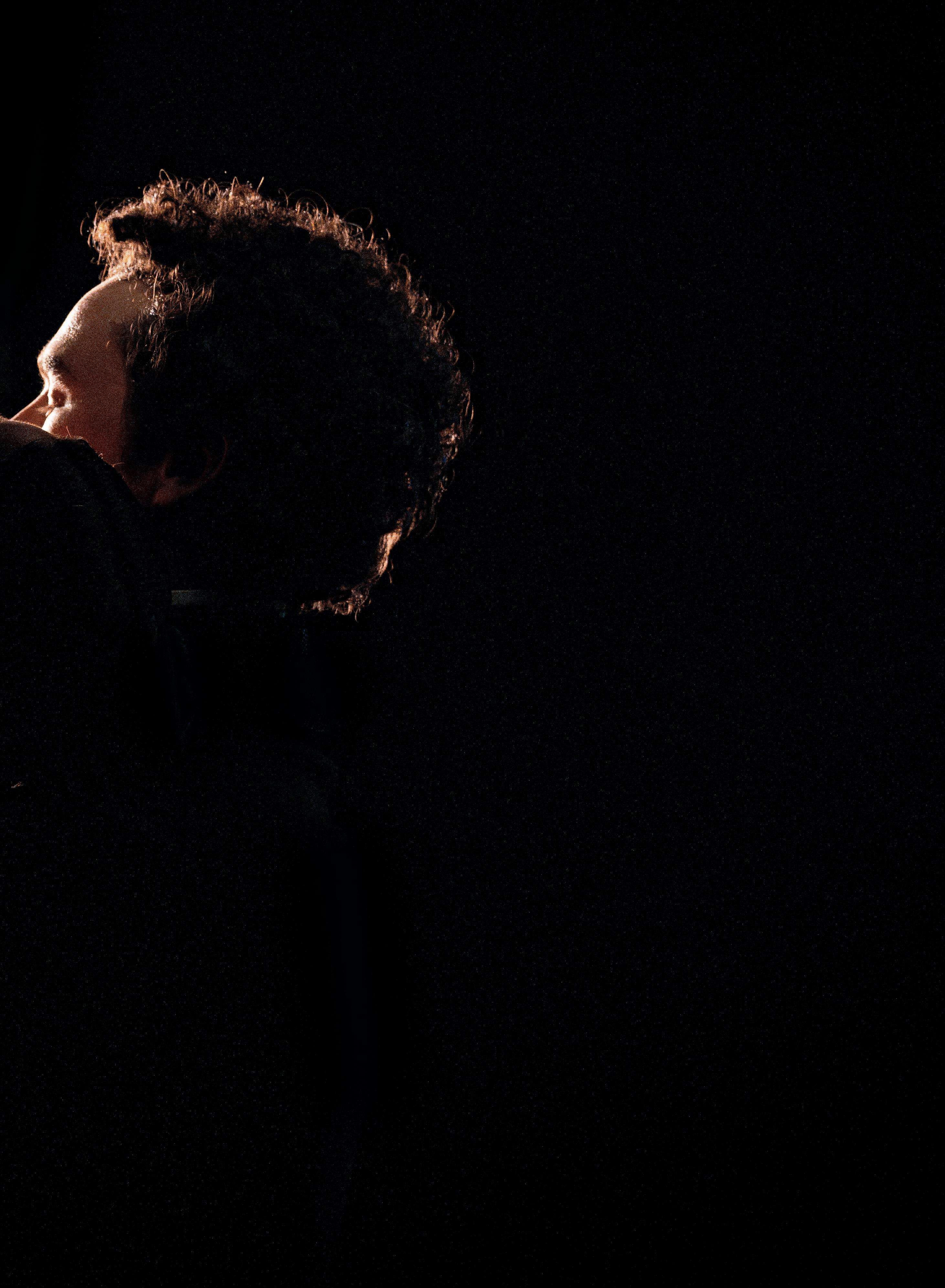
for artists of color, women, and gender-neutral stories.
In our upcoming Metropolitan Opera House season, we will be performing a full-length ballet called Woolf Works, based on three of Virginia Woolf’s books, Mrs. Dalloway, Orlando, and The Waves. This incredible work, choreographed by award-winning choreographer Wayne McGregor, has gender-neutral themes, reflecting Virginia Woolf’s own criticism of society regarding mental health and gender identity.
bollettino: Ballet often tells stories deeply rooted in history and culture. How do you make these narratives relevant and accessible to contemporary audiences who may not have the same cultural references or historical context?
susan jaffe: In my view, the themes of the great works of ballet are symbolically and archetypally universal. These works embody many aspects of human emotions, such as love, betrayal, darkness, light, vengeance, forgiveness, devastation, joy, passion, humor, etc. Swan Lake is a perfect example of this, it certainly isn’t a contemporary story, but people flock to see it worldwide.
During our last engagement at the Kennedy Center in February, our performances of Swan Lake were sold out three weeks before we arrived in Washington D.C. Still, new contemporary stories need to be created, and we are doing that with new full-lengths coming into our repertory that will be created by the choreographers of today. New stories and new plotless works keep our art form moving forward and keep ballet relevant and exciting.
bollettino: With the rise of digital distractions, how do you encourage younger generations to engage with the art of ballet, which demands sustained attention and appreciation for detail?
susan jaffe: I do find the digital distractions problematic for today’s culture, as it absolutely does make all of our attention spans less able to focus for long periods of time. To address this in today’s culture, I aim to create evenings that are shorter than in the past. My intention where possible is to not have any evening last longer than two hours. However, there are longer ballets that today’s younger generations are still attending and still enjoying. bollettino: How do you envision the future of ballet amidst the rapid evolution of technology and changing audience preferences, and what steps are you taking to ensure its continued relevance and vibrancy in the cultural landscape?
susan jaffe: Certainly, using the updated technologies of today, with projection, LED walls, and new ways of creating design is a way to keep relevant. For example, Wayne McGregor’s Woolf Works uses lasers in the second act, which creates a magical and contemporary feel while addressing the more contemporary sensibilities of today’s culture. Of course, there will be some people who don’t like the new works and prefer the classics, but I expect the younger generations will flock to the theaters to see these types of exciting new works.

IN AN EXCLUSIVE INTERVIEW WITH BOLLETTINO, DIRECTOR MATTEO GARRONE SPEAKS ABOUT MAKING
THE OSCAR-NOMINATED IO CAPITANO, A FILM THAT EXPLORES THE INTERCONTINENTAL JOURNEYS OF MODERN REFUGEES
PHOTOGRAPHY BY GRETA DE LAZZARIS


matteo garrone’s latest film, Io Capitano is a powerful exploration of the migrant experience through the rarely revealed perspective of those who undertake the dangerous journey. With careful pacing and cinematography, Garrone brings to life the humanity of the characters. The graceful intimacy allows newcomer Seydou Sarr to shine in his acting debut. The result is a moving, thought-provoking film, a masterful work that earned Io Capitano an Academy Award nomination for Best International Feature Film, and has solidified Garrone’s reputation as one of Italy’s most esteemed filmmakers.
Garrone’s body of work also includes such critically acclaimed films as Gomorra (2008), Reality (2012), Dogman (2018), and Pinocchio (2019), all of which have earned numerous awards and garnered critical recognition internationally. In our interview with Bollettino, Garrone offers insights into his approach to certain subject complexities, and into working with an international cast and crew.
“I tried to have a portrayal that neither romanticizes nor condemns the act of migration, but rather seeks to shed light on the nature of this complicated issue.”
— Matteo Garrone
bollettino: I’ve heard you mention Rossellini, Fellini, Tarkovsky, and Vigo as influences to your film making. One can feel these wonderful inspirations throughout Io Capitano. The majority of the film is an almost-documentary experience, yet there is a special moment where you choose to incorporate a bit of magical realism. Can you talk about this decision, how integral it is to the story and how it
touches upon the experience of Seydou, the film’s protagonist?
matteo garrone: These kinds of moments were deliberate choices aimed at adding depth to Seydou’s experience, and to highlight the cultural and emotional nuances of his journey. It was also essential to tap into the imaginative realm to show Seydou’s inner world and the complexities of his cultural background. Drawing inspiration from filmmakers such as Fellini and Tarkovsky, who masterfully blended realism with elements of fantasy, I wanted to create a moment of transcendence that would resonate with audiences on a deeper level. A scene of this kind is a departure from the extreme difficulties of Seydou’s reality, offering a glimpse into his inner world. I tried to emphasize the richness and resilience of Seydou’s cultural heritage. The universal human desire for hope and connection is strong in his character and culture. This moment is a layer of poetic escape that makes him relatable.
bollettino: How did you approach working with a cast and crew from different cultural backgrounds, including leads with no acting experience and a language barrier? What did you learn from the experience that may inform your future films?
matteo garrone: It is always enriching and challenging. It was particularly crucial with this film to work with the wonderful team we had, to ensure authenticity and sensitivity in our portrayal of the characters and their stories. To navigate the language barrier and cultural differences, I prioritized clear communication and a collaborative environment where everyone felt valued and heard. Whatever the obstacles, I found that our small differences ultimately helped the creative process, bringing a depth of perspective and the truth we were seeking for this story. Actors worked in a chronological mode. No one had a
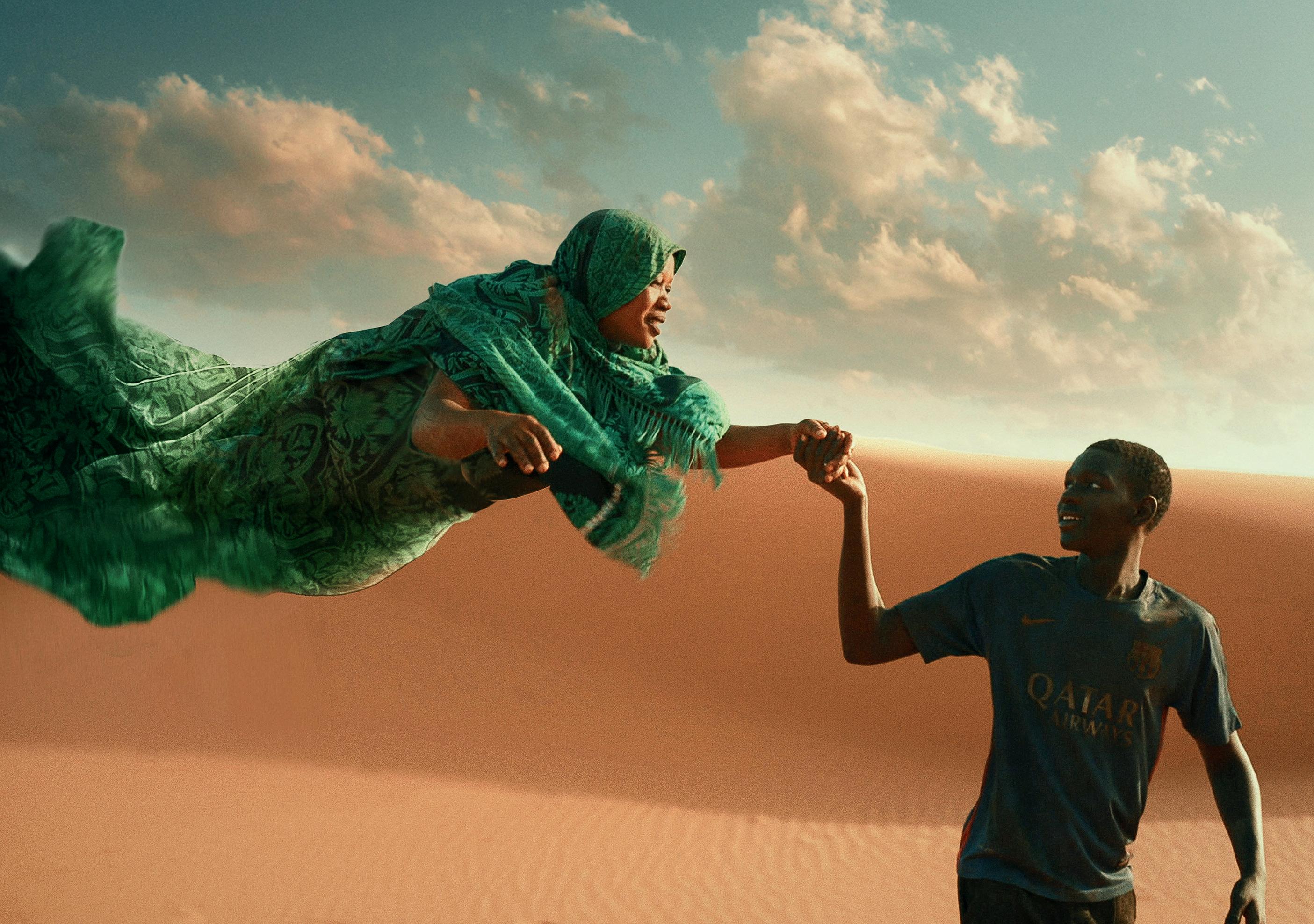
script. I would not tell them what was going to happen the following day, to keep true to the story.
Working with leads with no acting experience requires a different approach, I am used to it. I worked with non-professional actors in Gomorra. Marcello Fonte, the lead actor of Dogman, whom I met casually in Rome, won the Palme d’Or for best actor in Cannes. Instead of relying solely on traditional acting techniques, I encouraged spontaneity, allowing the performers to draw from their own life experiences and emotions. The approach not only brought a raw and genuine quality to their performances but also brought trust and camaraderie with the cast and crew.
bollettino: Your films often have young characters who embark on journeys that face crushing realities and in some cases pay the ultimate price. What comes through upon watching Io Capitano is the terrible toll and human tragedy of all those who do not endure. It walks the line of being a celebration of the human spirit in the face of incredible adversity and obstacles, yet almost a warning to not take the journey. How did you navigate this delicate juxtaposition? Was it something you thought about in the writing phase?
matteo garrone: Indeed, it’s a delicate balance and
was something I had to carefully consider. From the start, I wanted to show the nuances of the migrant situation in a way that honored the courage and determination of those who go to such lengths, while also making clear how deadly it can be — and ultimately is.
I tried to have a portrayal that neither romanticizes nor condemns the act of migration, but rather seeks to shed light on the nature of this complicated issue. It was crucial to show that very real people are suffering terrible tragedies because of these journeys. They are the Homeric characters of nowadays. They are the only ones living an epic life in the middle of our technological world. They embark on those endless trips — despite the pain, peril, deaths, fighting destiny — like no one does anymore. We were aware of the ethical implications of our storytelling, striving for sensitivity and respect. We hope the film serves as a tribute to the human spirit’s capacity for resilience, but also a reminder of the many dangers and injustices of these kinds of journeys. Ultimately, our goal was to provoke thought and empathy, encouraging audiences to confront the complexities of migration with compassion and understanding. It’s a delicate balance, but one that we approached with the utmost care and consideration from the very beginning.

milan’s teatro alla scala has been celebrating the centenary year of Maria Callas, with a special exhibit in her honor, “Fantasmagoria Callas.” The fabled Greek-American soprano who would have turned 100 on December 2nd, had a profound impact on the world of opera, and her legacy continues to inspire artists across creative disciplines, whether musicians, film-makers or fashion designers.
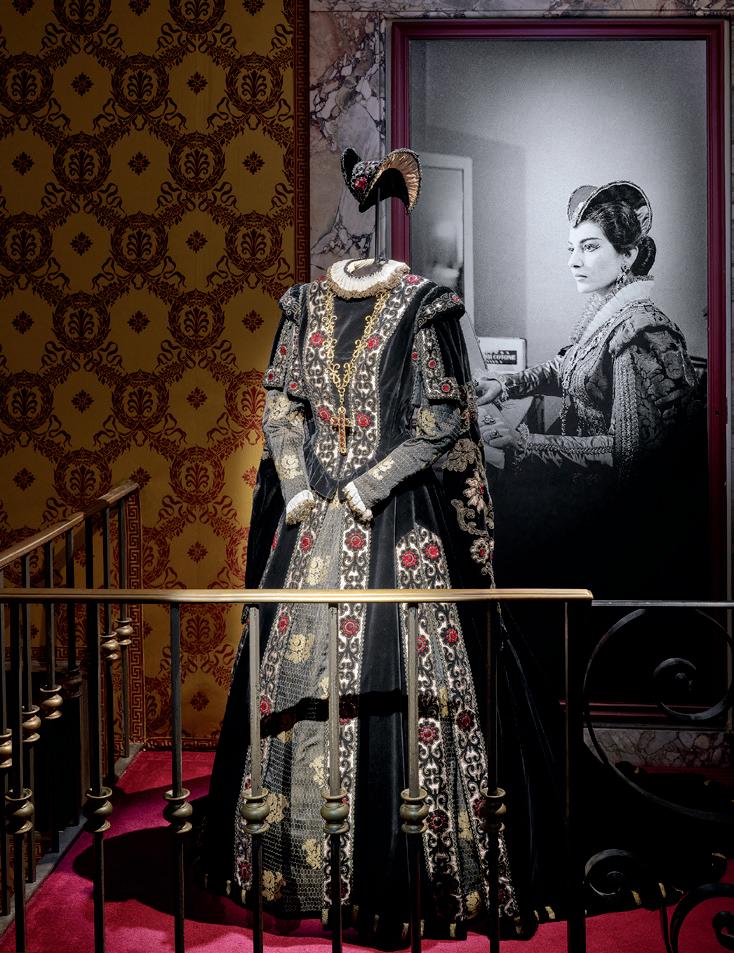 Photo credit: Giovanni Hanninen
Photo credit: Giovanni Hanninen
The relationship between the singer and the opera house was deep and meaningful. Callas made her La Scala debut in 1950, and became a fixture on its stage, delivering iconic performances in “La Traviata,” “Madama Butterfly,” and “Tosca,” amidst the more than two dozen productions. Her La Scala collaborations with the great Austrian conductor Herbert von Karajan were particularly fruitful, their partnership helping cement her status as the 20th century’s greatest soprano.
Curated by Francesco Stocchi, the artistic director of Rome’s Maxxi Museum, “Fantasmagoria Callas”
explores the singer’s extraordinary story at the Milan opera house through the lens of five artists. The composer Alvin Curran’s immersive installation uses original recordings of Callas at La Scala. The visual artist Latifa Echakhch composition from glass and beads evokes Callas as a ghost. A short film shot by Italian director Mario Martone re-enacts an episode in Callas’ life, the fragilities of her inner self. The artist Francesco Vezzoli compiles 63 images of Callas to tell her public story. And lastly, Giorgio Armani presents a classic Callas stage dress as a sculpture, solidifying the connection between himself, his home city of Milan, and the New York-born singer whose career was defined there.
The exquisite exhibition is an embodiment of the forever symbiotic relationship between Maria Callas and La Scala, an imprint of the continued after life of her legend. 100 years later, the diva endures.
JOHN GALLIANO AND PAT MCGRATH ’S COLLABORATION FOR MAISON MARGIELA ARTISANAL 2024 COLLECTION
WAS A VISIONARY SPECTACLE THAT APPROACHED PERFORMANCE ART
in early february , under Paris’ ornate Pont Alexandre III, Maison Margiela presented its Artisanal collection, a fashion show sure to be remembered for years to come. The setting was cinematic, evoking the late 19th century, transporting the audience to a world from another era.
The clothing was a study in innovation, with sculptural and body-modifying silhouettes that redefined and celebrated the female form. The makeup for the show brought the collection and experience into a rare stratosphere: instantly memorable and iconic. Pat McGrath, the renowned makeup artist, created looks that were at once bold, avant-garde, and transformative.
This was not the first time that Maison Margiela creative director John Galliano and Pat McGrath had collaborated. Their creative partnership has spanned decades, with McGrath working on many of Galliano’s most celebrated shows at Dior and Givenchy. Together, they
have pushed the boundaries of fashion and beauty, creating looks that are breathtaking and thought-provoking. Their collaboration on this year’s Maison Margiela Artisanal show was no exception. Models walked the runway with exaggerated features, distorted eyes, and graphic shapes that seemed to defy gravity. Unconventional materials, like tinfoil and tape, were used to fabricate futuristic effects that simultaneously evoked cyborgs and porcelain dolls. The presentation was an exceptional display of visionary invention, broadening the horizon of traditional beauty standards. The show was interpreted by some as commentary on beauty modifications and the lengths some people go to transform themselves, yet it could also be viewed as a celebration of self-expression and individuality. As the models strolled off the Port des Champs-Élysées, it was clear that the audience was experiencing more than just a fashion show, it was a true work of performance art.

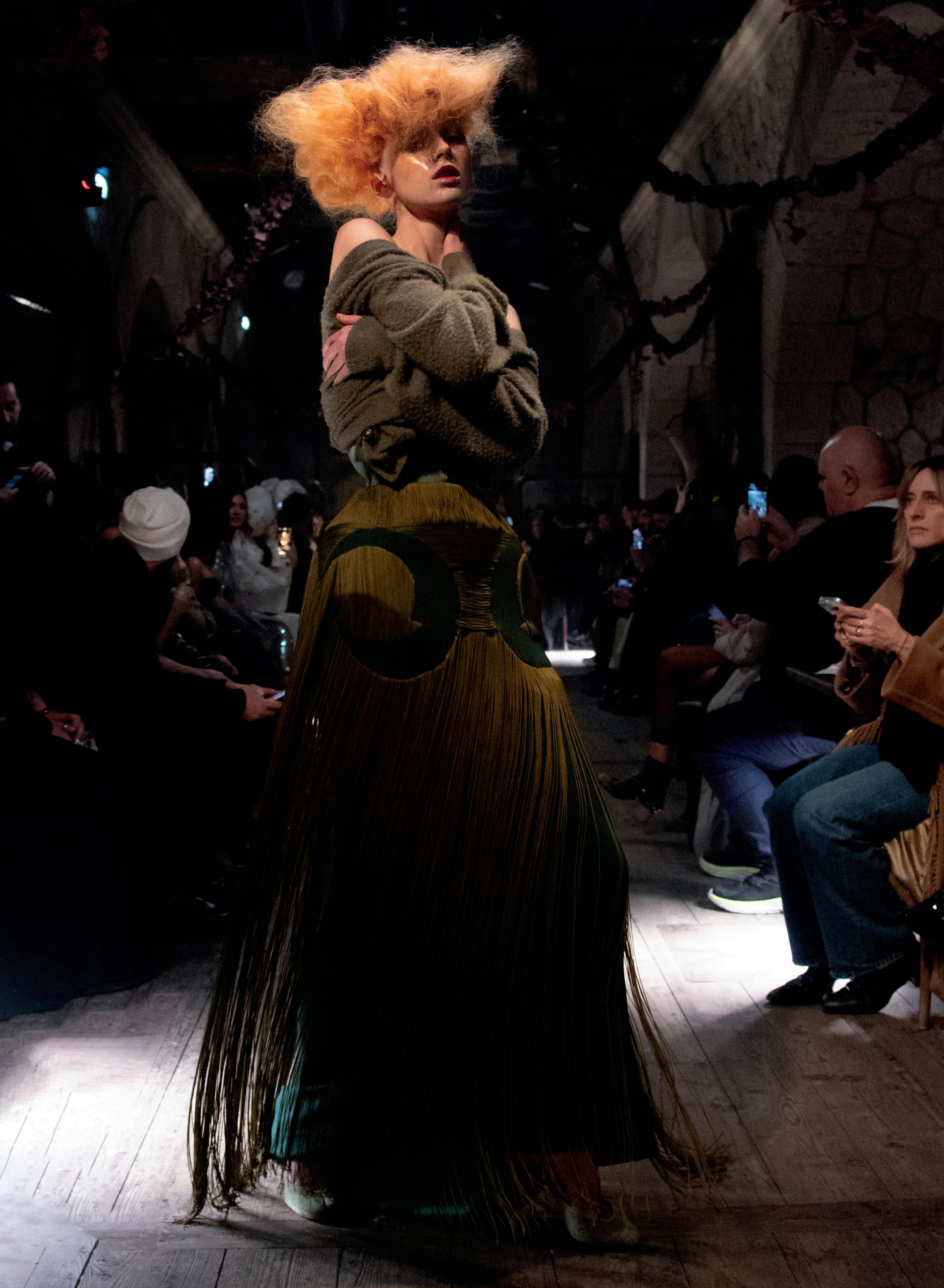

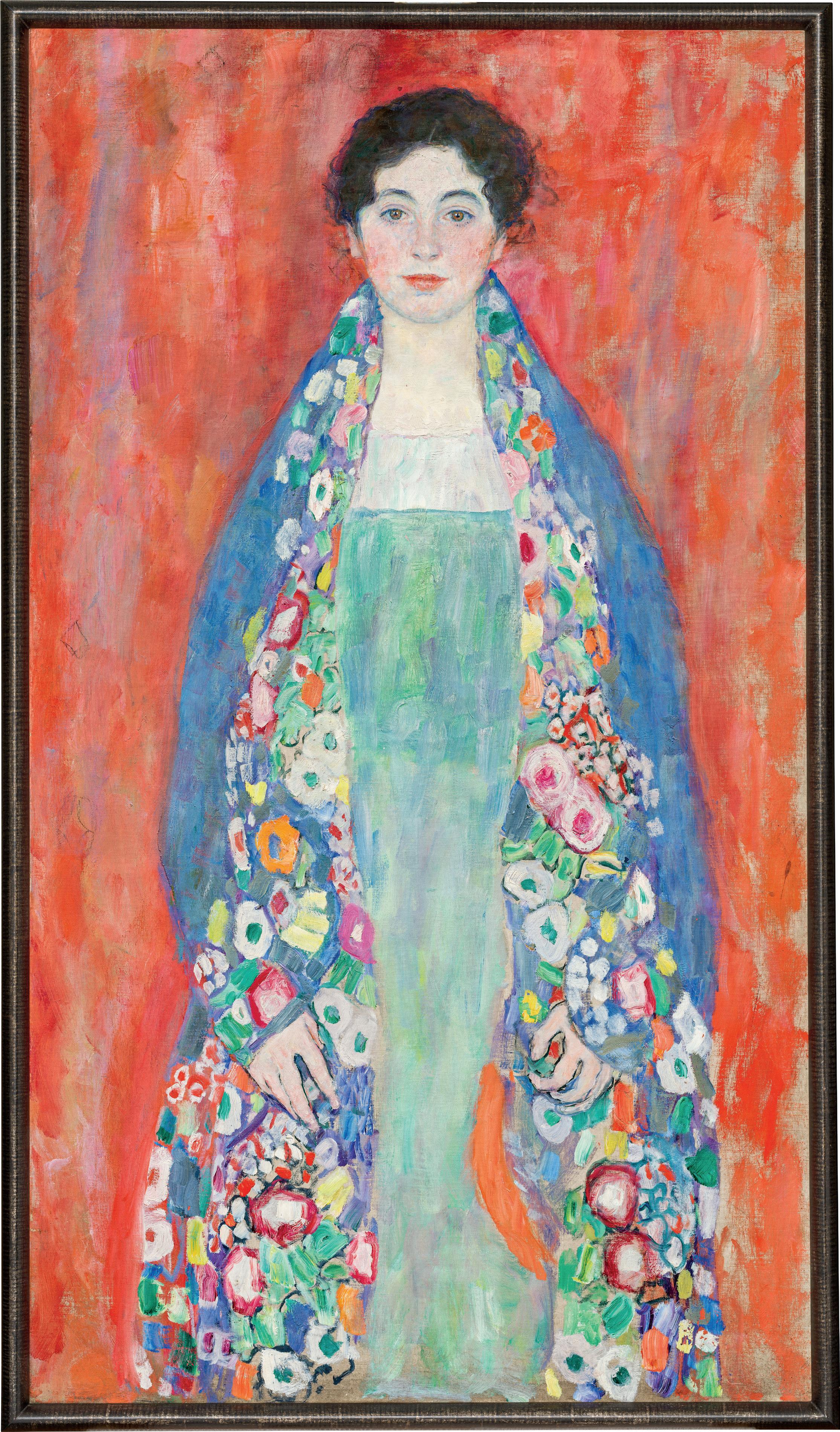
UNSEEN PUBLICLY SINCE 1925, IS UP FOR AUCTION
long presumed missing , Gustav Klimt’s “Portrait of Fraulein Lieser” has triumphantly reemerged to stun the art world. For almost a century, the painting had only been seen as a black-and-white photograph in catalogs featuring the turn-of-the-century Austrian symbolist’s artwork, the true colors remaining a mystery. Now, its vibrant hues have been unveiled, revealing the distinctive intensity that defined Klimt’s palette during his final years.
A work of such exceptional artistic and historical significance and value, has not been available on the art market in Central Europe for decades, and Austria has not seen a piece of comparable importance in years. Before being offered at a special auction at Vienna’s esteemed im Kinsky auction house, on April 24, 2024, “Portrait of Fraulein Lieser” embarked on a worldwide tour, providing an opportunity for art enthusiasts to see this previously hidden work up close. Historians date the portrait to 1917, Klimt’s last creative period, and a year before his passing. Using precise strokes, Klimt captures the subject’s face in a sensitive, realistic manner, while other parts of the painting exhibit the free, open brushwork that defines his late period. Strong complementary tones dominate the color palette, heightening the intensity of the painting and underscoring Klimt’s mastery of color. The shift towards loose, expressive brushstrokes marks a pivotal moment in Klimt’s artistic journey, making “Portrait of Fraulein Lieser” a rare and significant addition to his legacy.

THE REDISCOVERY OF ARTEMISIA GENTILESCHI’S 17TH CENTURY MASTERPIECE, “SUSANNA AND THE ELDERS,” SHEDS NEW LIGHT ON THE GREAT PAINTER AND HER TIME IN THE ENGLISH ROYAL COURT

“susanna and the elders,” a long-lost masterpiece by the celebrated Italian baroque painter Artemisia Gentileschi was rediscovered in the collection of the British royal family in Autumn of 2023. Misattributed for centuries, the magnificent 17th century work is a testament to the skills of an artist many consider to be the greatest European female painter of her generation, and among the few to receive recognition in her lifetime. In the late 1630s and early 1640s, Gentileschi lived in London, where her father, Orazio Gentileschi, was a painter in the court of King Charles I. Charles became Artemisia’s patron as well. The rediscovered “Susanna and the Elders,” dated circa 163840, was created during this period and provides a fascinating glimpse into Artemisia’s time in the royal court.
“Susanna and the Elders” is a stunning depiction of the Biblical story in which two older men are spying on a married woman. The painting is characteristic of Gentileschi’s bold, expressive style, with its rich colors and dynamic composition. Traditionally painters have rendered this scene with Susanna suffering, turning away from her tormentors or looking up to the heavens as she endures their cruelty. Here, the artist departs from tradition, depicting Susanna with a defiant and confrontational disposition towards the men. Gentileschi’s Susanna is far from a victim, and appears ready to strike a blow. Artemisia faced numerous hardships in life, both due to her gender and her success as an artist, handling these with courage and strength, much like Susanna, whom she “painted” at least three times over a career that spanned more than four decades.
The newly rediscovered “Susanna and the Elders” was brought to light through the exceptional work of the Royal Collection Trust curators. While tracing the paintings of Charles I, which were sold off and scattered after his 1649 execution, a discrepancy was found. Curators matched the description of Gentileschi’s “Susanna” to a painting that had been in storage for over 100 years, misreported, and in poor condition. Conservation efforts revealed a previously hidden “CR” brand on the painting, confirming its connection to Charles I’s collection, and its status as the work of Artemisia Gentileschi. The find provides a significant addition to the artist’s known works and a deeper understanding of her journey. The painting is now on display at Windsor Castle, alongside her “Self-Portrait,” and her father’s “Joseph and Potiphar’s Wife.”



THE METROPOLITAN MUSEUM OF ART REORGANIZES ITS RICHES


after a comprehensive five-year renovation, the European Wing of New York’s Metropolitan Museum of Art has reopened. The wing has a transformed layout that focuses on the interconnectedness of cultures, materials, and individual moments in the collection. A new chronological sequence showcases over 700 works from The Met’s renowned holdings, offering thematic groupings and fresh dialogues between pieces.
Where previous organizing factors focused on empires, national schools and geographic distinctions, the newly reconfigured galleries set works of Northern and Southern Europe into direct exchange with one another. This approach allows visitors to explore the collection in a new light, discovering unexpected connections and juxtapositions.
The longstanding strengths of The Met’s collection — masterpieces by the likes of Rembrandt, Caravaggio, and Poussin — remain central. Yet the rearranged installation gives new attention to women artists, explores Europe’s complex relationships with New Spain and the Vice-
royalty of Peru, while also delving deeper into the histories of class, gender, race, and religion.
The renovation also focused on enhancing the physical space. New wall colors reinforce the chronological sequence, and repositioned doorways create dramatic vistas throughout the wing. The skylights and roof above the galleries were also renovated, allowing for even more natural light to illuminate the collection.
The origins of The Met’s European paintings collection date back to the museum’s founding purchase in 1871, and it has since been enriched by numerous donations, bequests, and acquisitions. Today, it possesses one of the most comprehensive surveys of European painting anywhere in the world, displayed prominently in galleries at the top of the marble staircase that extends from the museum’s Great Hall.
Now, visitors to the reimagined European Wing will experience a fresh and engaging perspective on art history, one that highlights the complexities and connections that define the continent’s rich cultural heritage.





hong kong’s m+ museum is set to host the first major retrospective of the seminal modernist architect I.M. Pei. Entitled “Life is Architecture,” the exhibit offers a rare opportunity to explore the life and work of one of the most celebrated designers, engineers and draftsmen of our time. It also marks a fledgling spotlight moment for the young museum, which aspires to be a beacon for contemporary Asian art and design.
Born in Guangzhou, China in 1917, I.M. Pei came to the United States in 1935 for schooling, graduating from MIT, then teaching at Harvard. In 1955, he established his own firm, I.M. Pei & Partners, with an archi-
tectural style characterized by geometric forms, clean lines and a minimalist aesthetic. His work earned countless accolades and awards, including the coveted Pritzker Architecture Prize. By the time I.M. Pei passed away at the age of 102, his stature as one of the 20th century’s greatest architects was assured.
Pei’s M+ retrospective features over 200 models, drawings, and photographs chronicling his journey, from a childhood in China to a long-list of renowned projects. These included John F. Kennedy Presidential Library in Boston, one of Pei’s first high-profile commissions; Hong Kong’s Bank of China Tower, the first skyscraper built outside the United States; and the Louvre Pyramid in


Paris, a commission that was met with controversy when it opened in 1989 but has become an iconic symbol in the City of Lights.
Pei once said, “The most important thing is to create a building that is appropriate for its time and place.”
That understanding of how to mix modernity with perpetuity is one reason his work continues to inspire artists and thinkers.
M+ hopes to use Pei’s legacy in Asia and around the world as a bridge to the West. One of its goals for “Life is Architecture” is to draw attention to the institution, which opened in 2021 and seeks to become a magnet for artists outside the traditional western canon. Among the aims for M+ as an Asian museum is to broaden the dialogue between East and West, while highlighting excellence in territorial architecture, design and art.
Among the other shows at M+ is new work by A.A. Murakami, a London/Tokyo based duo whose multi-disciplinary, science-based techniques create experiences of heightened reality that emulate nature. The upcoming show at M+ includes a pair of immersive installations — one traces the journey of physical fog rings traveling into the digital realm, while the other reveals an environment of floating bubble clouds.
Another exhibit is a survey of paintings by Ay-O, a leading figure in post-war Japanese contemporary art, best known for his rainbow patterns. The 92 year-old Ay-O is a long-time member of the Fluxus community, which lauds a performative, experimental, anti-elitist approach towards art, much of it based in Eastern Buddhist thought. Exactly the sort of under-acknowledged history and body of work M+ is seeking to celebrate.

tucked away in the heart of Florence lies Officina Profumo-Farmaceutica di Santa Maria Novella, a luxury perfumery with a long rich history. Founded by Dominican friars in the 13th century, the esteemed perfume brand Santa Maria Novella has been creating scents for royalty and discerning patrons for over 800 years.
The story begins in 1221, when the monks founded the convent of Santa Maria Novella and began to cultivate a garden. In that garden, many centuries of pharmacopeia experience and natural preparations developed, essences distilled, fragrances created. Their scented waters were highly prized for their exceptional quality and unique blends, earning the monastery a reputation as a premier perfumery.
Over the centuries, Santa Maria Novella has continued to innovate and refine its craft, while remaining true to its heritage. Today, the brand offers an extensive range of luxury perfumes, colognes, and home fragrances coveted by connoisseurs world.
From the iconic “Acqua della Regina” to the lavish “Potpourri di Firenze”, each fragrance is a testament to the brand’s commitment to excellence and tradition. With its storied past, exceptional craftsmanship, and unwavering dedication to quality, Santa Maria Novella has earned rarified status in the world of luxury perfumery.
with over 5 billion smartphone users worldwide, it’s easy to get lost in a sea of sunsets pics and selfies, but Danilo Lauria’s story is a remarkable exception. This talented New York City-based photographer and video artist has managed to turn his smartphone camera into a passport to the world, using it to create major brand-campaigns and traversing the globe in the process.
Starting out with a love for capturing images on everything from a webcam to polaroids, Danilo honed his style by using his sketching ability while experimenting with early video platforms like Vine and later Instagram. His fusion of talents has resulted in a singular style best described as immersive stop-motion video. Lauria’s hypnotic and transfixing videos quickly gained him a following on social media, which eventually caught the attention of fashion industry insiders.
Fast forward to today, Danilo has worked with iconic fashion brands and art institutions, including The Met Gala and the Guggenheim Museum, capturing stunning images that have graced magazines and prominent digital media platforms. His unique perspective and creative vision have taken him to exotic locations, from the bustling streets of Tokyo to the otherworldly shores of the Galapagos Islands.
Danilo’s journey is a testament to the power of one person’s ingenuity with using common tools like a smartphone and a polaroid camera, and points directly to the increasing democratization of creativity.
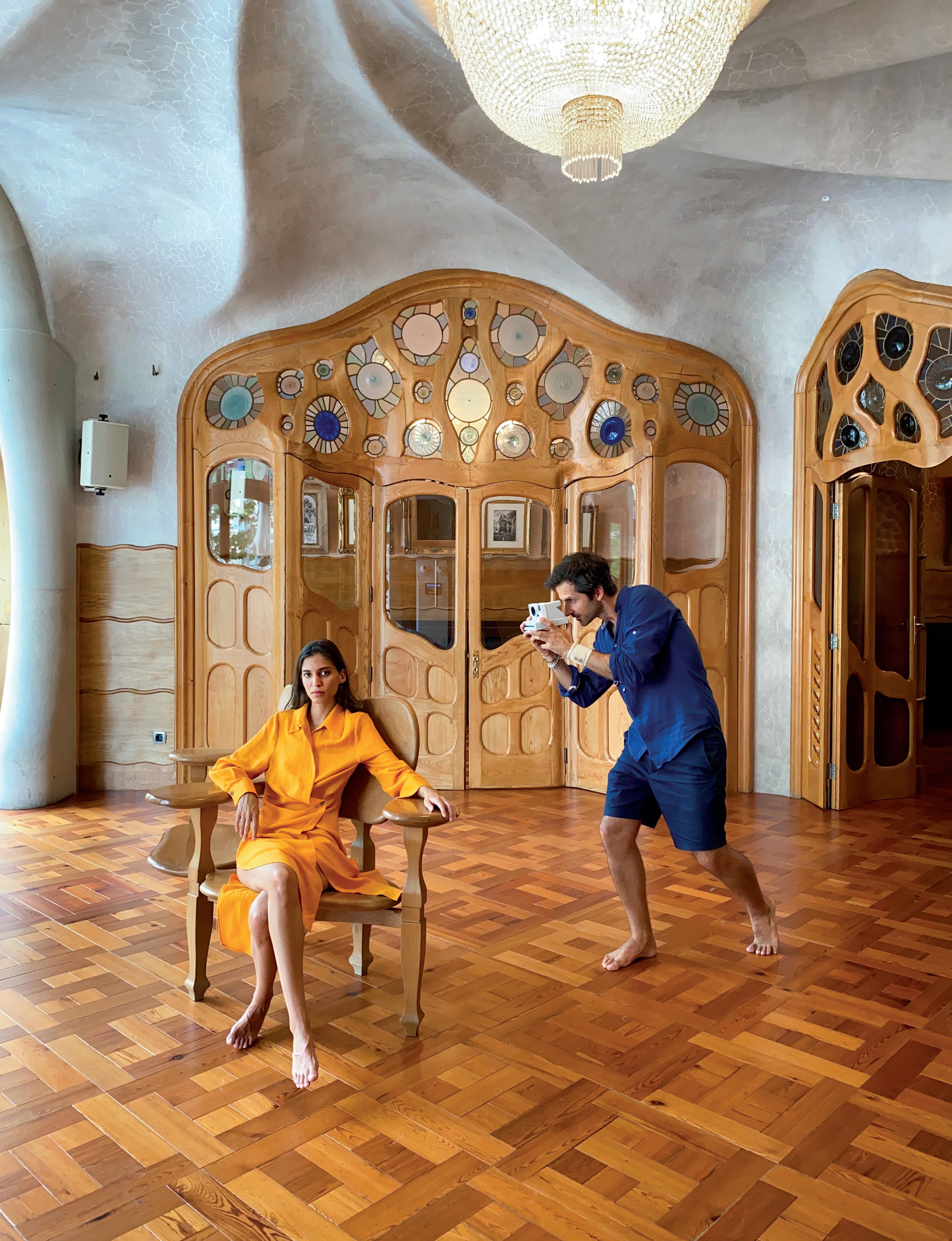
IN ORDER : Juana Burga, Nicole Neumann, Sam Smith, Liu Wen, Bonnie Senko, Karlie Kloss, Luma Grothe, Natalia Vodianova, Karolina Spakowski, PierPaolo
Piccioli, Hailey Bieber, MLMA/Baek Ye-jin, Gigi, Yvesmark Chery, Marta Piekarz, An Koval, Marina Testino, Xavier Serrano, Megan May Williams, Grace Ling, Clara McGregor, Meghan Roche, Laura O’Grady, Danilo Lauria, Anastasia Kolganova.
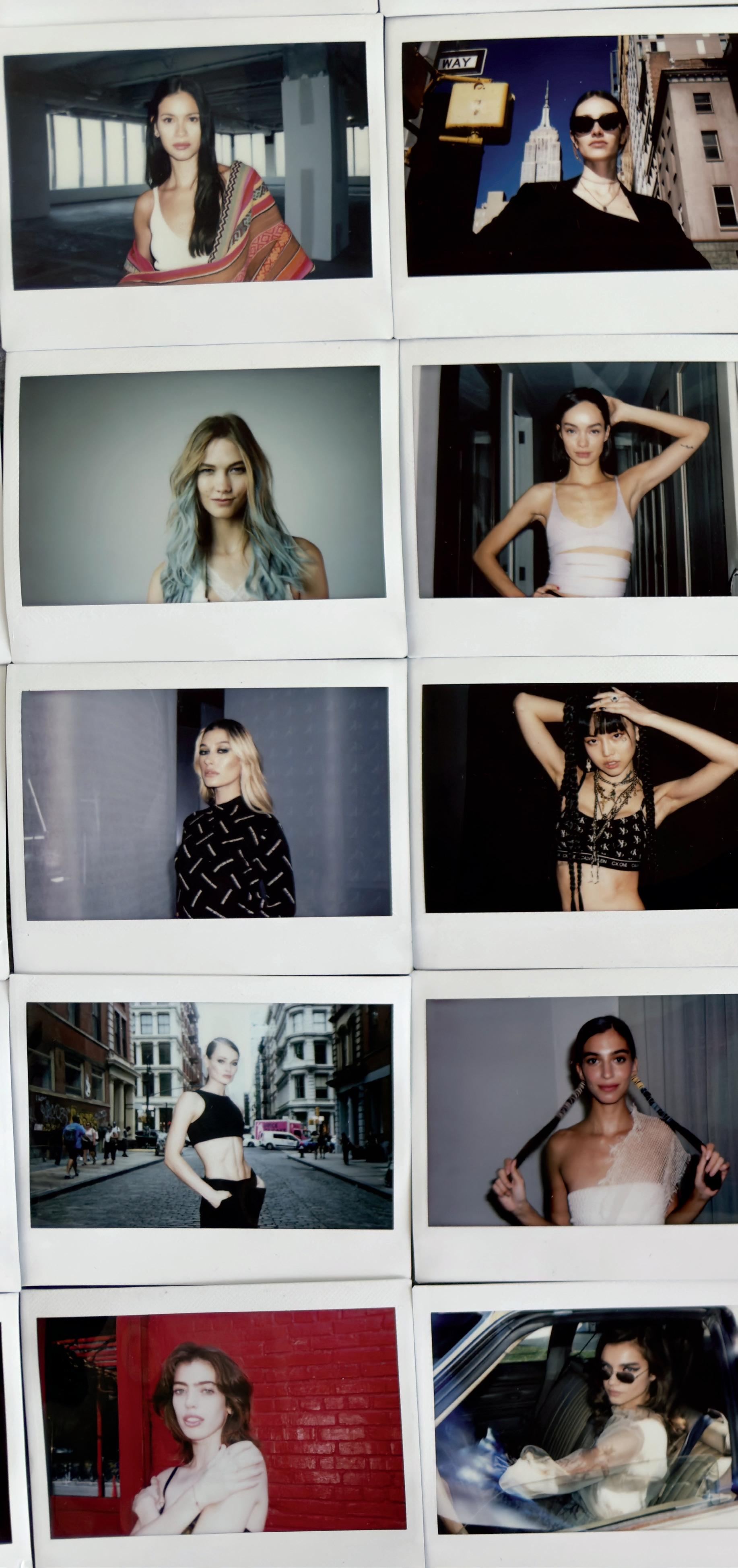
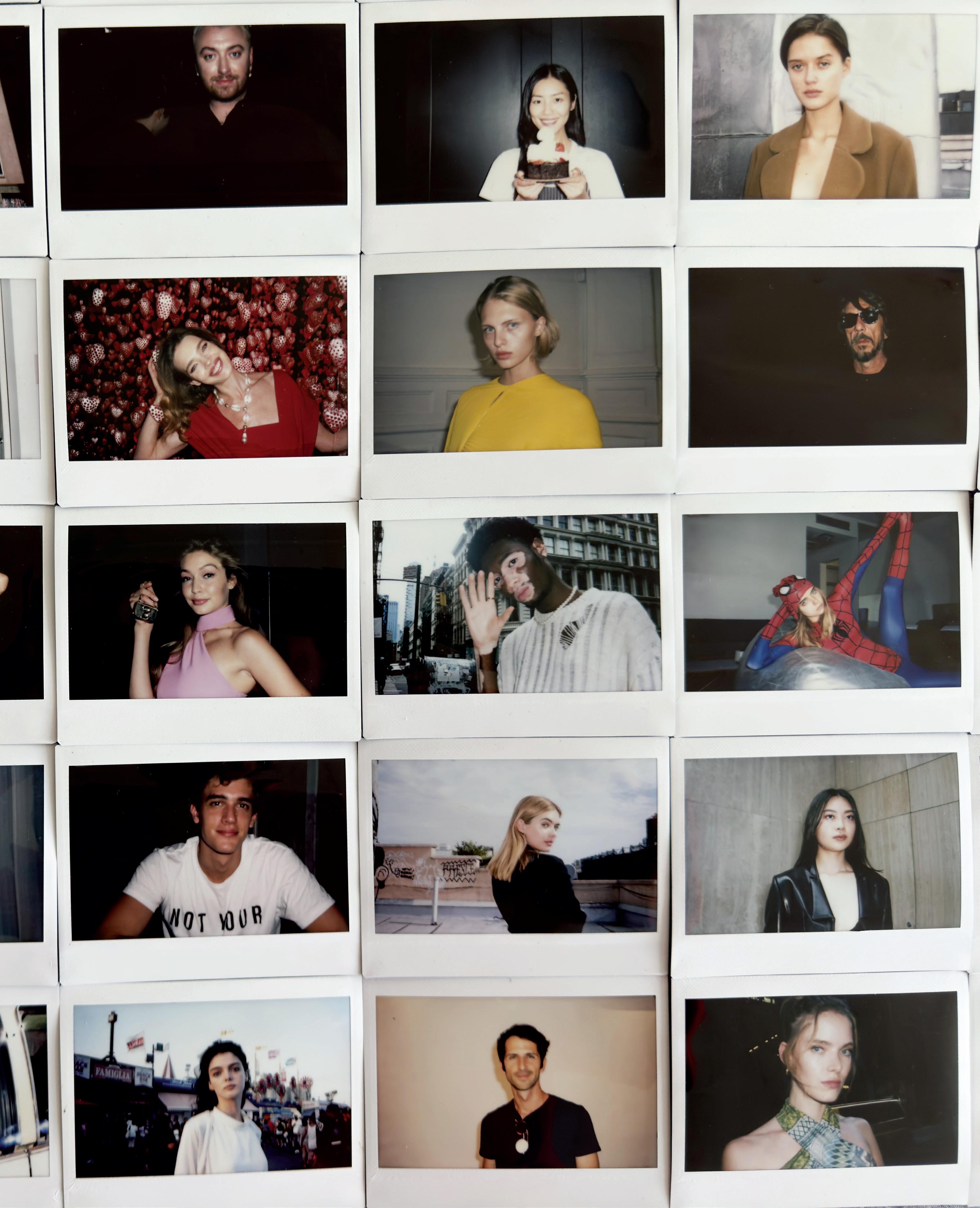




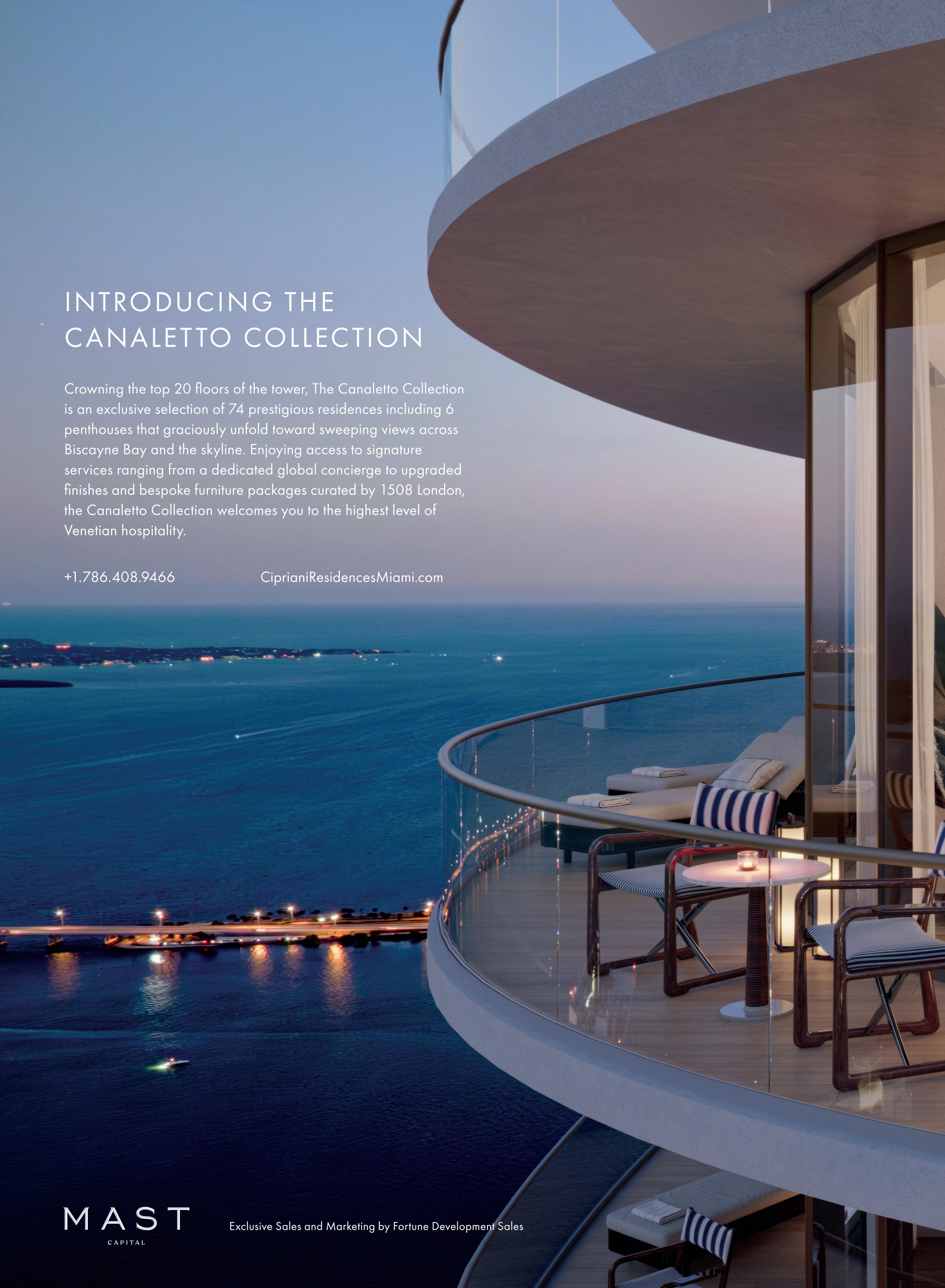

THE AUCTION OF SIR ELTON JOHN ’S COLLECTION OF PHOTOGRAPHS REVEALED PRINTS BY SOME
OF THE 20TH CENTURY’S GREATEST PHOTOGRAPHERS
it takes a special talent to understand the power of an image, what makes a great one in the moment, and what can stand the test of time. From the onset of a career that would eventually find him as one of the entertainment world’s few EGOT winners — that is, a holder of an Emmy, Grammy, Oscar and Tony — Sir Elton John knew how to look like a star in a picture. By the early 1990s, he also knew the importance of spotting and collecting such pictures. And did so with aplomb. Over the last three decades, he has amassed one of the world’s greatest private photography collections, one that’s been the basis of numerous museum shows, and which recently bowled over participants in a Christie’s auction of John’s vast archive.
The collection features photographs from the breadth of the 20th century, by some of the form’s leg-
endary practitioners: Ansel Adams, Irving Penn, William Klein and Man Ray, whose 1932 image Glass Tears John purchased in 1993 for what was then the single highest price paid for a photo print. Iconic portraits of the century’s most famous figures, including Alfred Eisenstaedt’s daydreaming Marilyn Monroe and Nickolas Muray’s seated Frida Kahlo rest side by side. Besides the portraits are murky images that echo historical narratives, Karl Strauss’ smokey sepias of a New York City rising, and Brassaï’s foggy and goth pre-war Paris. When it came to great photographs, John was an agnostic collector: abstract photos live comfortably next to fashion shoots and design case studies. In his assembly, an image is an image is an image. What Sir Elton John understood was the difference between one that was ephemeral and one that was timeless.

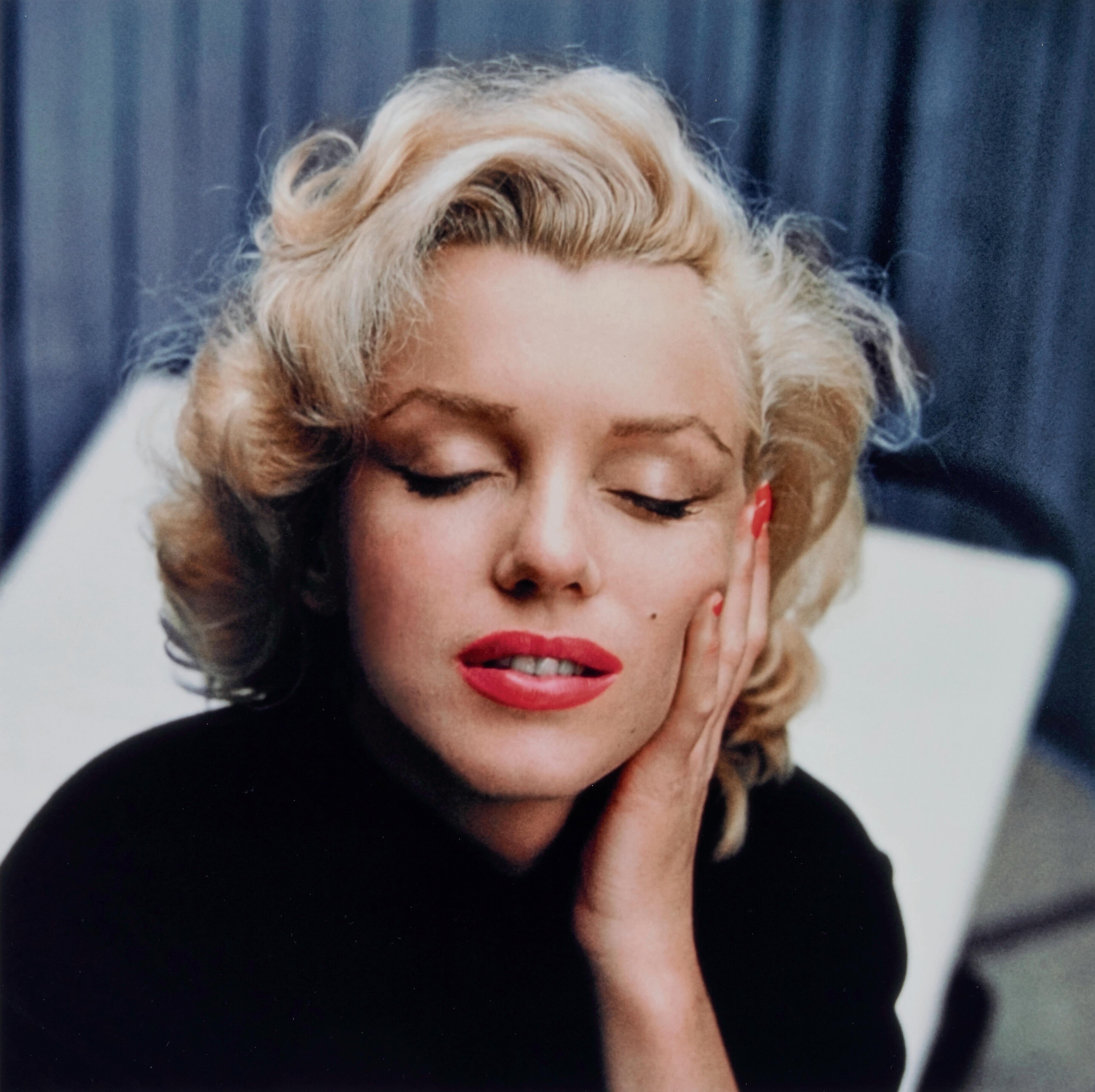

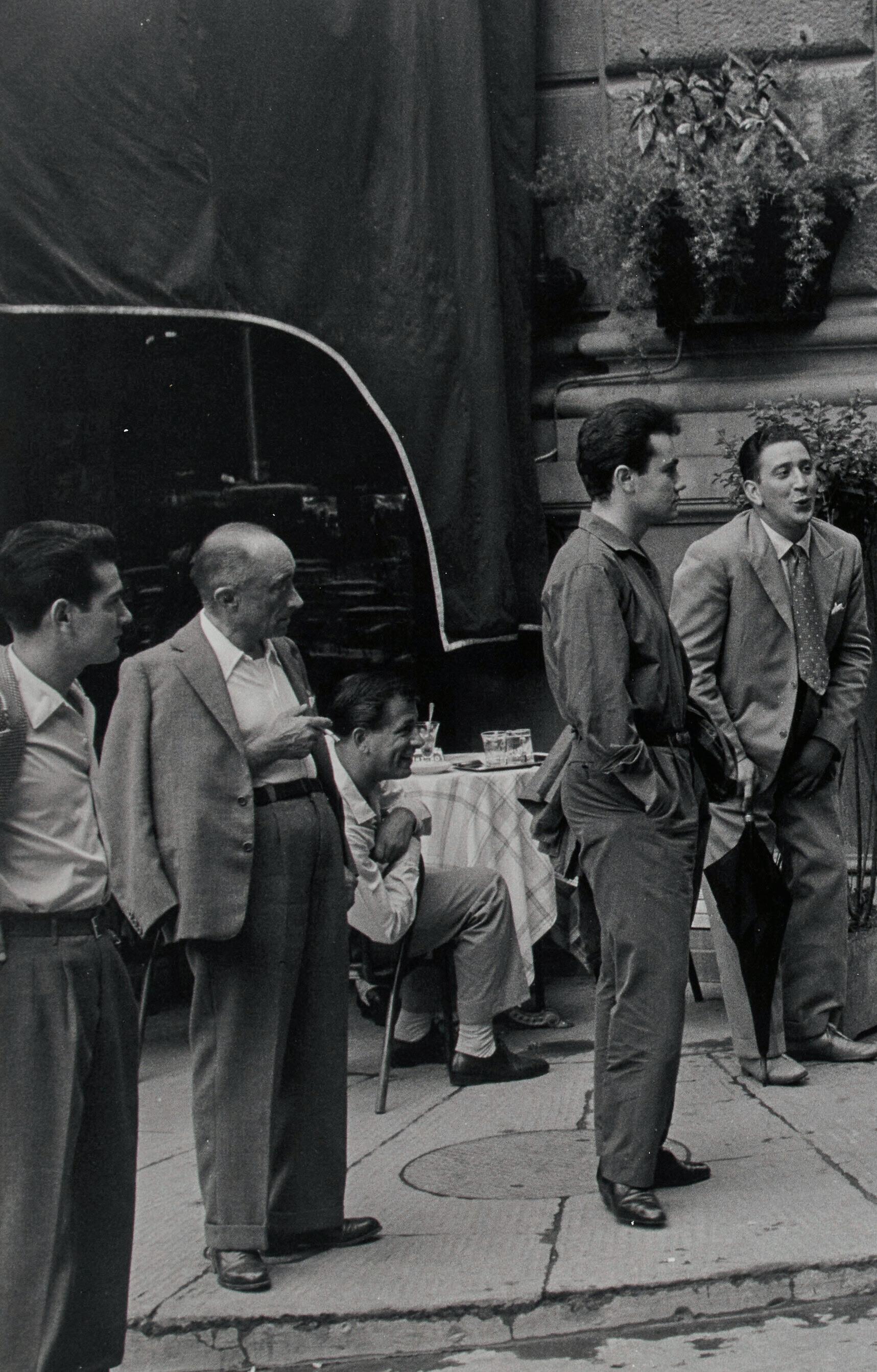


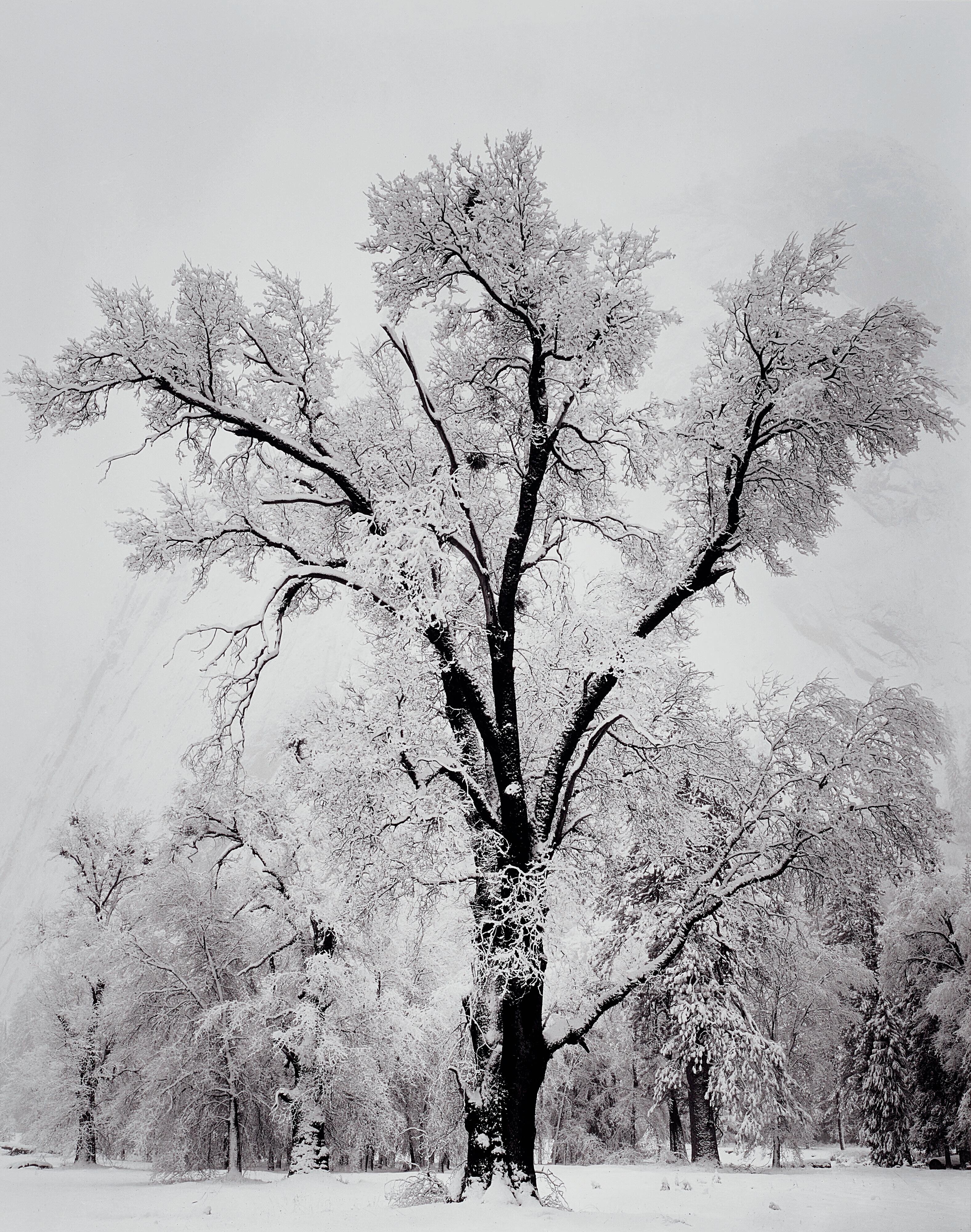



CREATED BY HUGO PRATT IN THE ‘60S,
CORTO MALTESE IS AN ETERNAL OUTSIDER WHOSE QUEST FOR IDENTITY AND BELONGING STILL RESONATES
in a world where borders are shifting and identities in flux, the themes of voyage, travel and outlander status have never been more relevant. It is in this cultural landscape that the legendary comic book character Corto Maltese has found new life.
Created by Hugo Pratt in 1967, Corto Maltese is a sailor, adventurer and romantic, who roams the world in search of meaning and belonging. His stories are a rich tapestry of historical and literary references, philosophical musings, and pulp fiction thrills. But it’s Corto’s outsider status that resonates most deeply with contemporary culture.
Graphic novels and comics as a whole have long been a powerful medium for exploring complex themes and ideas. From the early days of superheroes to the modern-day indie comics scene, visual on-page story-telling has evolved to encompass a wide range of styles and subjects. The Corto Maltese books, in particular, stand out for their unique blend of adventure, history, and philosophy.
In the pre-Internet age, Corto Maltese’s travels were many people’s first exposure to far-away lands and exotic cultures. Through his adventures, readers were transported to distant corners of the world, encountering ideas and perspectives that broadened horizons. Today, Corto’s journey continues to inspire, reminding us that the search for identity and belonging is a lifelong odyssey. The exhibition, “Corto Maltese: Une vie romanesque,” at the Pompidou Center in Paris from late May until the fall, offers a unique opportunity to explore the world Hugo Pratt imagined, and the creative process behind the adventures. Through his original artwork, notes, and sketches, the visitors gain insight into Pratt’s vision and the enduring impact of his creation. The prescience of the themes and the ways in which they speak to our own experiences is evident throughout. Whether we are expats, migrants or simply trying to find our place in the world, Corto Maltese’s journey is shared by many – it requires courage, curiosity, and a willingness to embrace the unknown.




my hometown is a city that pulses with life, where the warmth of the sun is matched by the warmth of its people. Sevilla is a city that wears its heart on its sleeve, where the rich history and culture seep out of every stone and brick. From the majestic cathedral and royal palace to the intimate flamenco bars and narrow streets, every corner of Sevilla has a story to tell.
What truly sets Sevilla apart is its soul — the way the city comes alive with music, dance, and art. The Semana Santa processions, the Feria de Abril, San Miguel Feria, each is a testament to the city’s passion and joy. And then there are the everyday moments — the scent of orange blossoms in the spring, fun times with friends at one of the many great restaurants, the sound of castanets and guitar in the streets.
Sevilla is a city deeply rooted in its traditions, yet always looking forward. It’s a place where the past and present are one, where the Moorish architecture and the Baroque churches stand alongside modern street art and avant-garde music venues. This convergence of cultures and richness of texture is my inspiration when I am designing new collections of jewelry.
For me, the soul of Sevilla is all about the way it makes you feel, the way it wraps you in its embrace and makes you want to dance, sing, and live life to the fullest.
@crusset
It’s a city that gets under your skin, that makes you fall in love with its imperfections and its beauty. And once you experience it, you’ll always want to return.
velázquez, the waterseller of seville (ca. 1618-1622)
An incredible testament to the subtle mastery of Velazquez. The painting was his version of a genre scene popular at the time. Traditionally these images would mock stereotypes of street vendors that were prominent in the city. The hot summers were nearly unbearable and water-sellers were depicted by other artists as scoundrels who truly took advantage of the situation. In Velazquez’s hand, the water-seller is shown with a certain innate dignity, despite his ripped tunic. He passes a crystal-clear glass, filled to the top with water, to a boy; the gesture and scene have a sacramental feel. Something spiritual and pure is being passed, more than water…knowledge, wisdom, grace are words that come to mind. The story is also told through the vessels…one small and dry, likely empty; the other large, full and the water dripping down the side, proof of its fullness and sustaining life power. The textures in this painting have always stood out to me as well as the way the ordinary citizens are given the grace normally reserved for saints and kings.
picasso, bullfight (1934)
The culture of Sevilla is very much connected to the Feria de Abril. The vibrant traditional colorful dresses called traje de gitana are worn with pride by every woman and little girl during this very special occasion. As a child I looked forward to it every year, and really have come to love how it brings our city together in a joyous way. Part of the tradition of the festival is the bullfighting legacy and history in the Real Maestranza de Caballería. This Picasso, with its jagged lines, sharp angles and bright colors captures the chaos, violence and surreal beauty of the spectacle of this ancient event.




THE 60TH EDITION OF THE MOST INFLUENTIAL
ART SHOW ON EARTH IS AGAIN MARKING FIRSTS, BREAKING NORMS AND INVITING DIALOGUES
this year’s 60th International Art Exhibition of La Biennale di Venezia is a significant milestone in the history of the esteemed cultural institution whose narrative themes and curatorial choices are central to the global conversation around art and society.
Founded in 1895, the Venice Biennale has, over the last century, been a leading platform for showcasing the world’s most innovative and influential artists. The first editions were a celebration of Italian art and culture, but the premiere event has evolved to featuring artists from 80 nations, with diverse backgrounds and disciplines, attracting visitors from around the world. Over the years, the Biennale has played host to countless masters, from Marcel Duchamp and Pablo Picasso, to Marina Abramovic and El Anatsui, among many many others.


This year, Adriano Pedrosa, the current artistic director of Museu de Arte de São Paulo Assis Chateaubriand, takes the reins as curator, marking a number of firsts for the Biennale. Pedrosa is the first Latin American and the first curator based in the southern hemisphere to assume this prestigious role, bringing a fresh perspective and unique insights to the exhibition.
Pedrosa’s theme for the 2024 exhibition, “Foreigners Everywhere!,” is a thought-provoking concept that resonates deeply today. It promises to be a fascinating exploration of the ways in which artists engage with issues of identity, belonging and otherness, and how their work reflects and challenges our understanding of what it means to be a “foreigner.” With Pedrosa’s expertise and vision, this year’s Biennale is poised to offer a unique and powerful platform for artists to share their perspectives and challenge our assumptions.
Among the young, geographically diverse artists Pedrosa has invited to show their work at 60th Biennale is Mexico City’s Ana Segovia represented by the Kurimanzutto Gallery. The 32-year-old painter utilizes familiar images from the Golden Age of Mexican Cinema and from Westerns, altering their forms and tonalities, and thus dislocating the standard perception of the images. Segovia’s paintings challenge viewers with enigmatic faces, vibrant color schemes, and humorous scenes that cleverly subvert seriousness - not to mention gender and meaning.
By embracing playfulness as a powerful political tool, Segovia’s work creates tension around conformity, inviting a dialogue that challenges the status quo. It’s a microcosm of what Pedrosa’s choices have brought to this year’s Venice Biennale, and how what happens there reflects on the cultural conversation around the world.
WHAT WAS LIFE LIKE INSIDE
“BEATLEMANIA”? THAT FRENZIED, HISTORICALLY RICH MOMENT IN TIME — WHEN THE FAB FOUR FIRST CROSSED THE ATLANTIC AND WERE MET WITH SCREAMING THRONGS — KICKED OFF A GENERATIONAL YOUTH MOVEMENT, AND JUMP-STARTED WHAT CAME TO BE KNOWN AS THE SIXTIES
now, 60 years after The Beatles landed in New York City to appear on the Ed Sullivan Show, we have a brand new perspective on that tempest, a clear view of being there. The exhibit, “Paul McCartney Photographs 1963-1964: Eyes of the Storm,” is a treasure trove of images that a then-21 year-old McCartney took on the band’s first trip to America. Having practiced photography in school, Paul purchased a 35mm SLR Pentax as The Beatles first experienced success, and began using its lens on the road, documenting his friends George, John and Ringo, as well as the wild spectacle unfolding all around them. Set to open at the Brooklyn Museum in May, “Eyes of the Storm” features over 250 photos that reveal the energy of the era, the evolving post-war urban and media landscapes, the shining faces crowding The Beatles and beaming at them, the very birth of a new popular culture. But at its heart, McCartney’s photographs are a personal document of four young men growing, embracing their new lives as catalysts for a changing world, wanting to hold its hand.
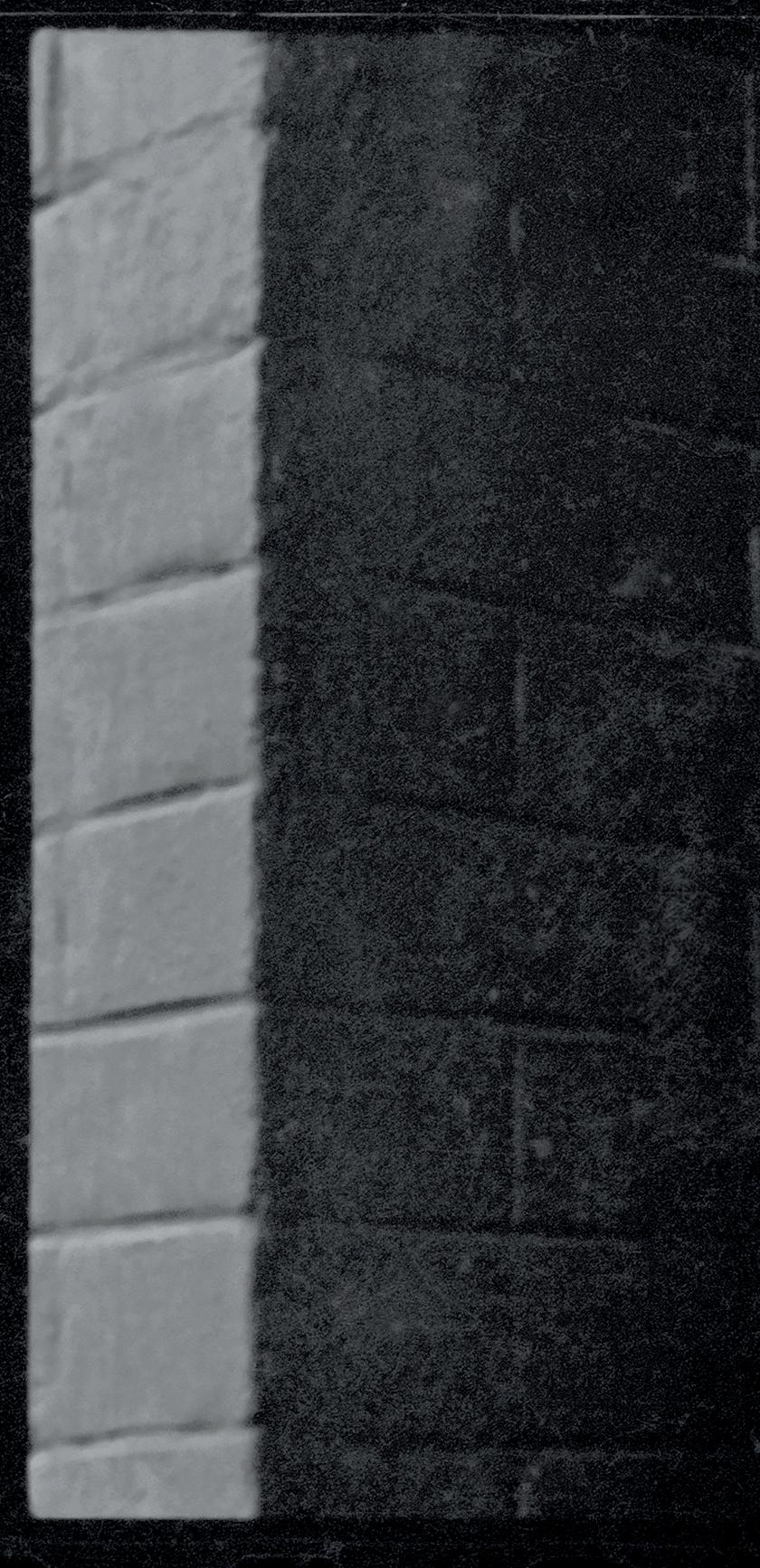


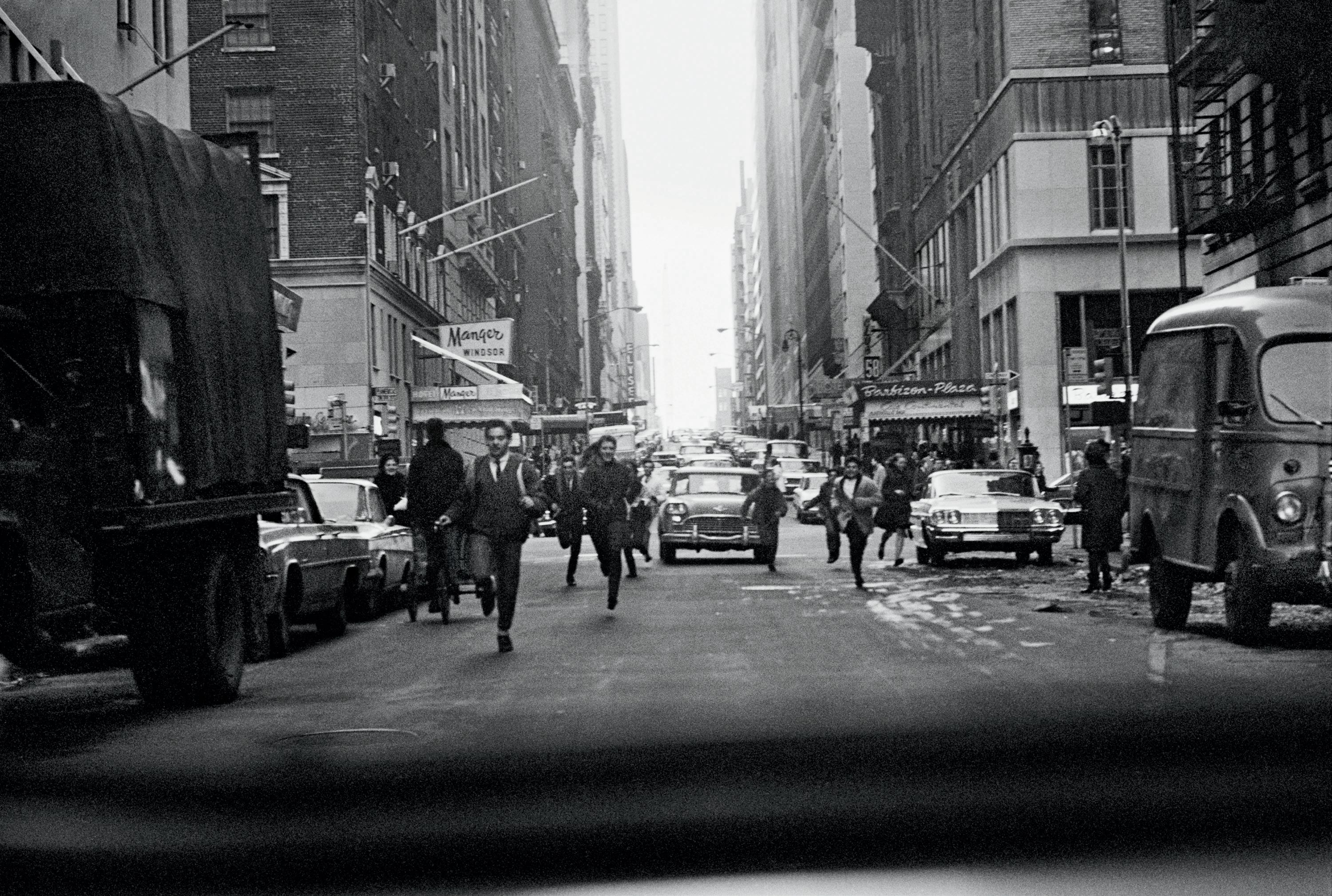


A COMBINATION OF TIMELESS DECOR AT CASA CIPRIANI AND ICONIC PIECES FROM THE TIFFANY LOCK COLLECTION MAKES FOR AN EVENING OF LUXURY AND ELEGANCE. THE TIFFANY LOCK BANGLE IS AN EXPRESSION OF LOVE’S ENDURING PROTECTION. A UNIVERSAL SYMBOL OF WHAT MATTERS MOST, LOCK KEEPS SAFE THAT WHICH IS CHERISHED.

TOP CENTER
jewelry: Tiffany & Co.—
Tiffany HardWear graduated link earrings in 18k gold ($8,000.00), Tiffany HardWear Small Link Necklace in Yellow Gold ($11,000.00), Tiffany HardWear Medium Link Bracelet in Yellow Gold with Diamonds ($20,000.00)
Available at select Tiffany & Co. locations 800.843.3269 tiffany. com; dress. Philip Plein.

BOTTOM RIGHT jacket & trousers: Canali; shirt: Philip Plein; tie: Tom Ford; shoes: Carlos Santos.
BOTTOM LEFT jewelry: Tiffany & Co.—

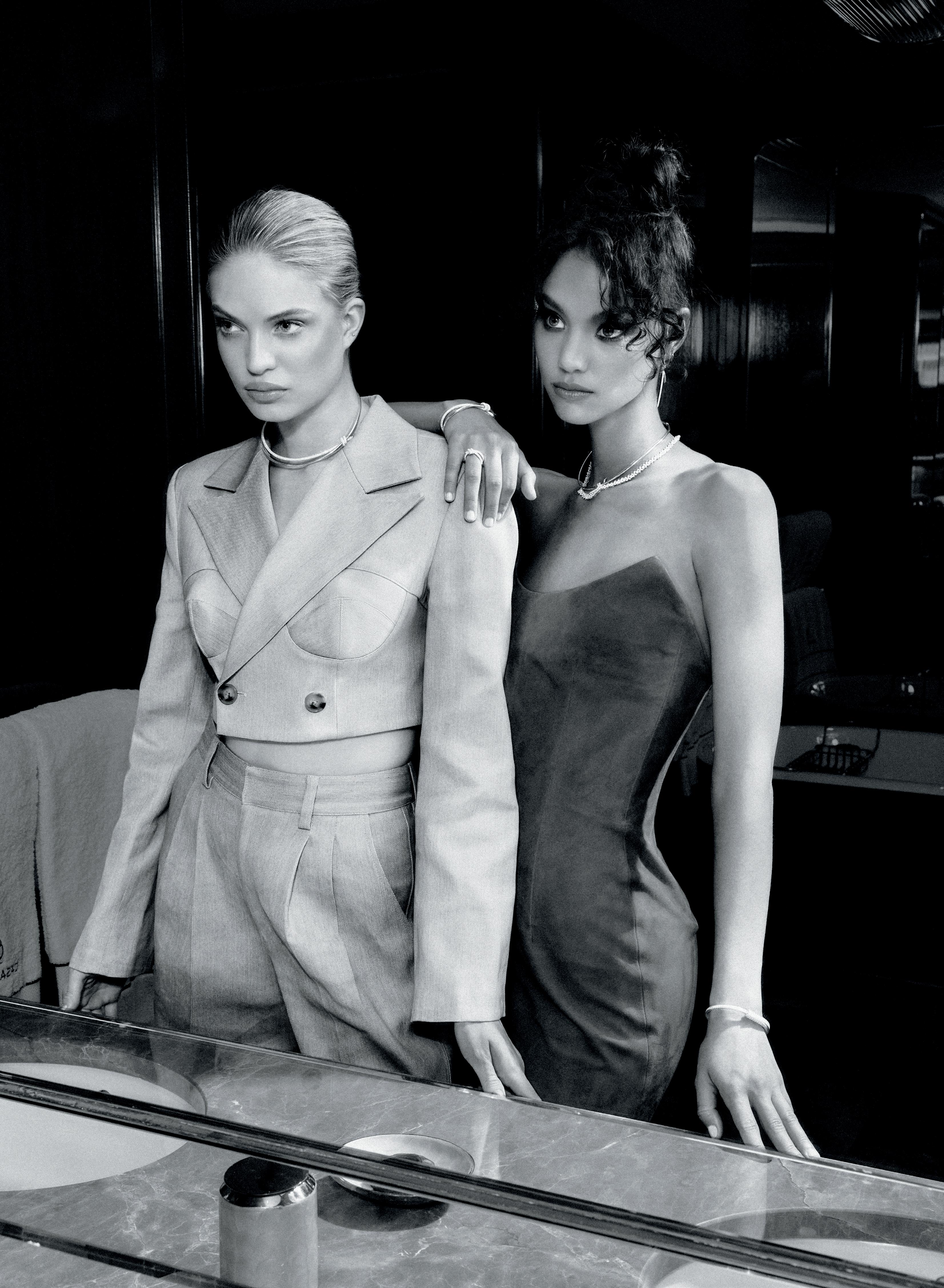

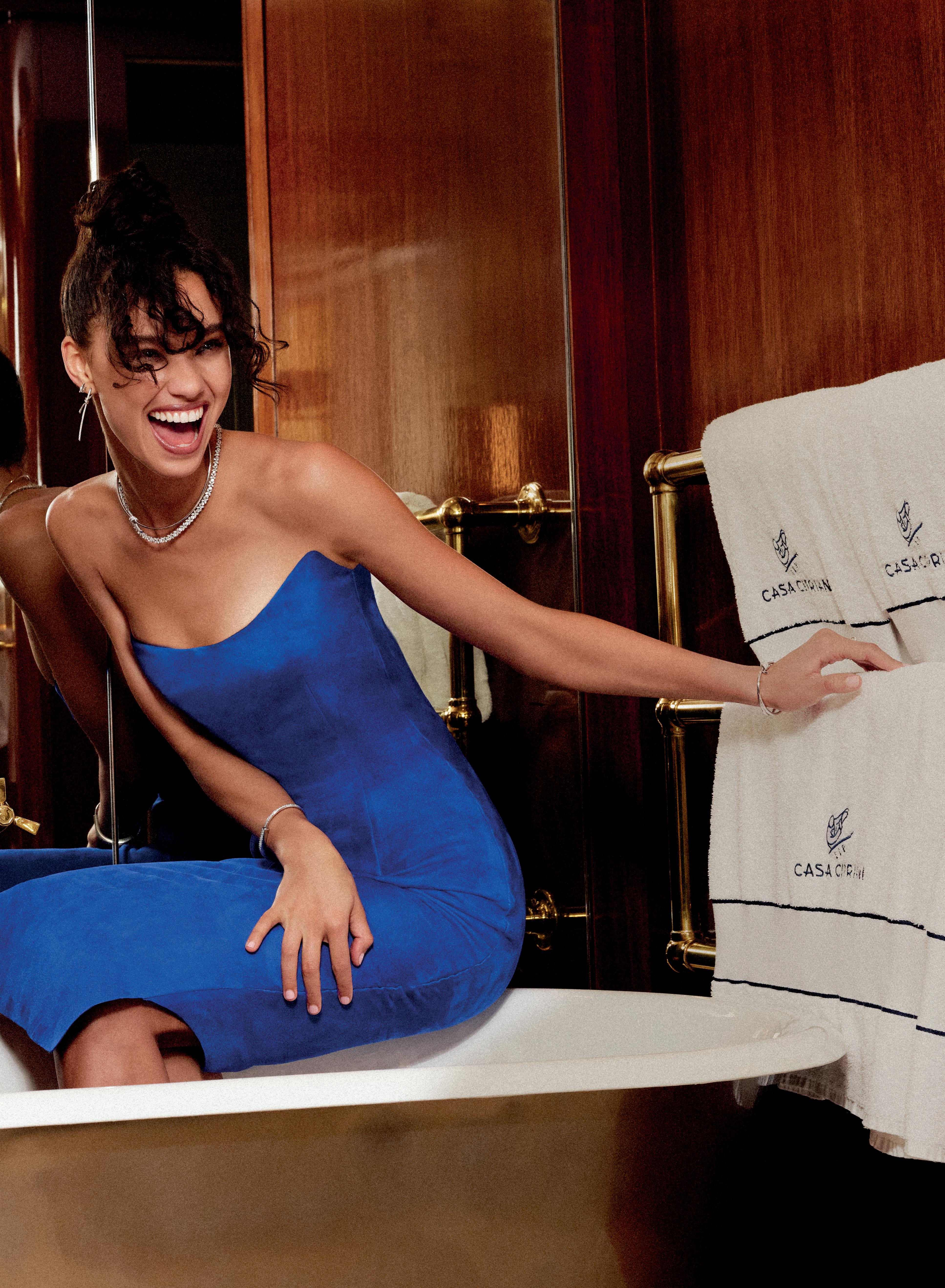


in “emperor of rome, Ruling the Ancient World”, renowned historian Mary Beard brings to life the complex world of ancient Rome, exploring the nuances in the lives and reigns of its emperors. With a blend of meticulous research and engaging and approachable prose, Beard reveals the intricate web of power, politics, and personal ambition that defined the Roman Empire. What were the daily lives of these men who were imbued with such power like? Were their days filled with countless hours of administrative paperwork, or an endless orgy of bacchanalian feasts? Beard seeks the truth and reveals answers that at times show parallels to our current state of politics and media.
To the victors go the spoils. So it is with the line of succession of Emperors; if the existing emperor was assassinated then he would likely be demonized. A peaceful transition of power to an appointed successor resulted in a positive remembrance of the deeds and actions of the predecessor. One emperor who did not have a pleasant end to his reign was the young Elagabalus, who was stabbed to death by his soldiers and according to legend, his body unceremoniously tossed in the Tiber. Beard shares a story passed down through the ages of a decadent feast hosted by Elagabalus and immortalized in the painting on the following page: Elegabalus once hosted a
dinner in which he showered his guests with so many rose petals that they suffocated under the weight and depth of the deluge of flowers; all to his merriment. Beard invites us to consider the factuality of the story within the context of state intrigue and the ancient version of public relations. Such displays of opulence were not just about personal indulgence but were integral to the fabric of Roman political life, as these stories were either meant to show the power of the emperor as a positive trait, or conversely examples of his decayed moral state.
Beard’s analysis is insightful and nuanced, offering a fresh perspective on Roman imperial power. She challenges traditional views of Rome’s emperors, presenting them as multifaceted individuals shaped by their time and circumstances. They often have more in common, than what separates. She makes this point by illustrating how many of their busts and even layers of names are sometimes practically indistinguishable from one another. A smaller nose here, a crinkle in the brow there and suddenly a new emperor, without the cost of replacing an existing statue— even emperors had to sometimes consider budgets and finances. These nuggets of information and more make the book a captivating journey through time, rather than a dry historical account.
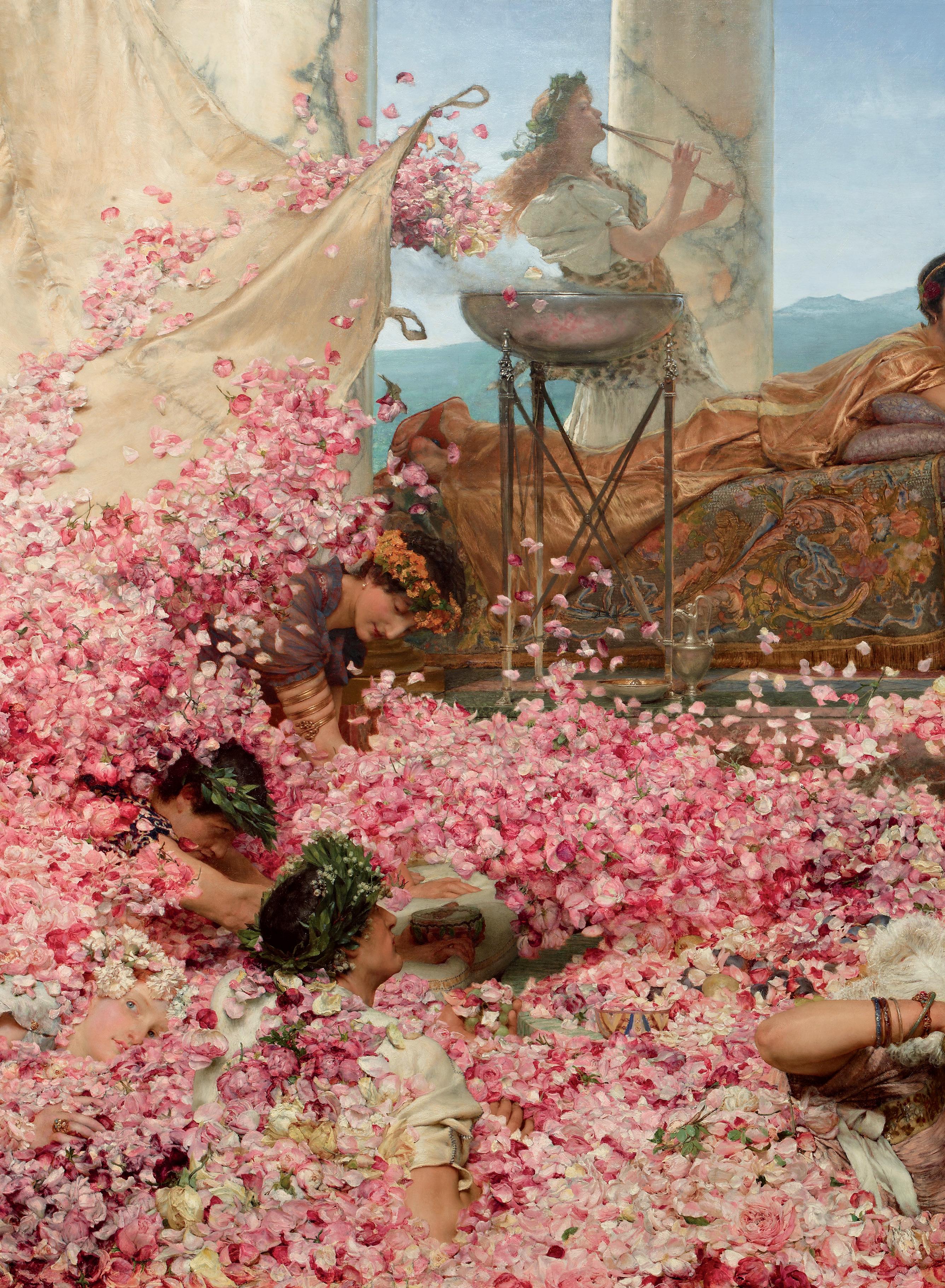
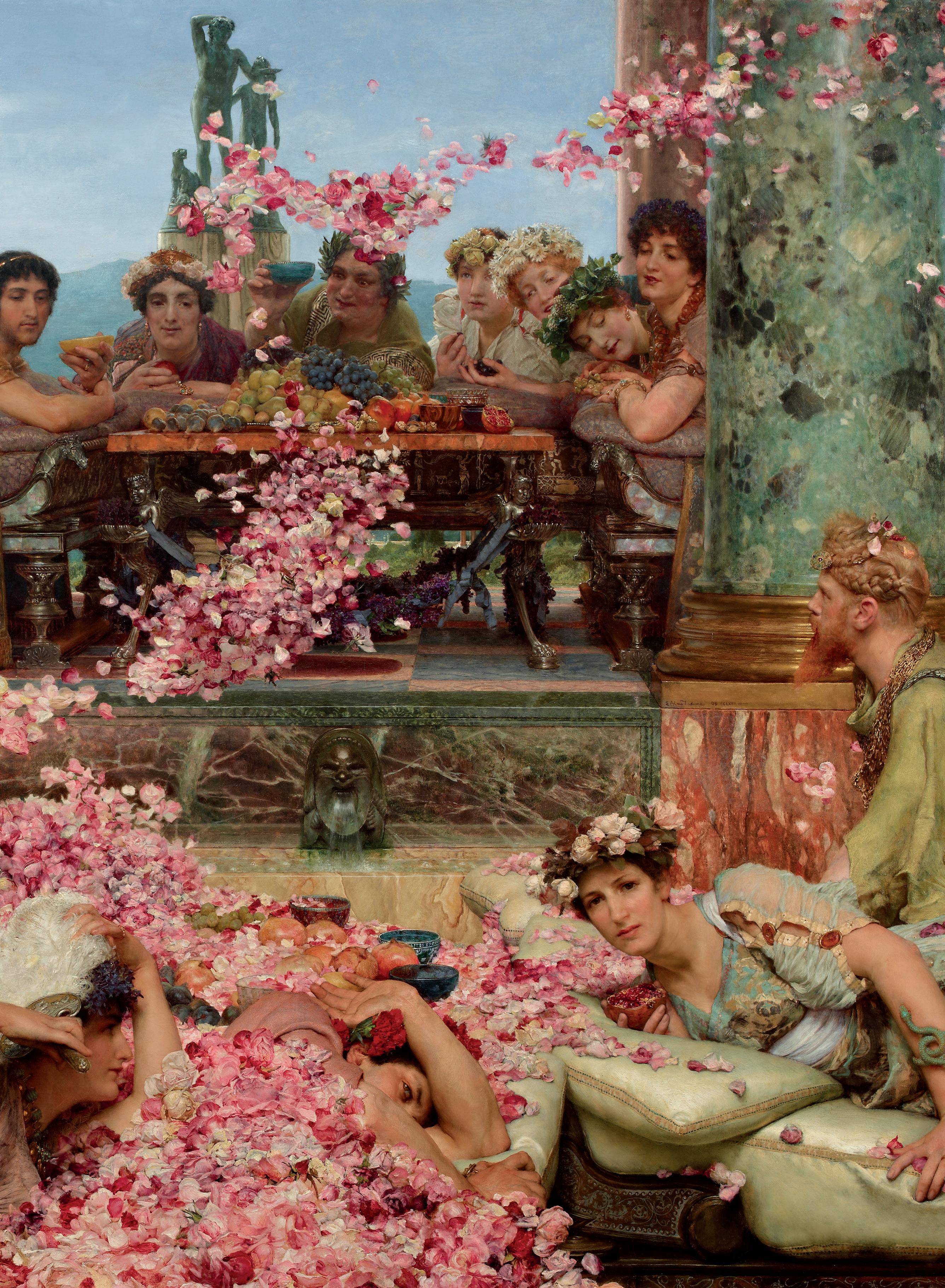 The Roses of Heliogabalus by Alma-Tadema (1888), oil on canvas.
The Roses of Heliogabalus by Alma-Tadema (1888), oil on canvas.
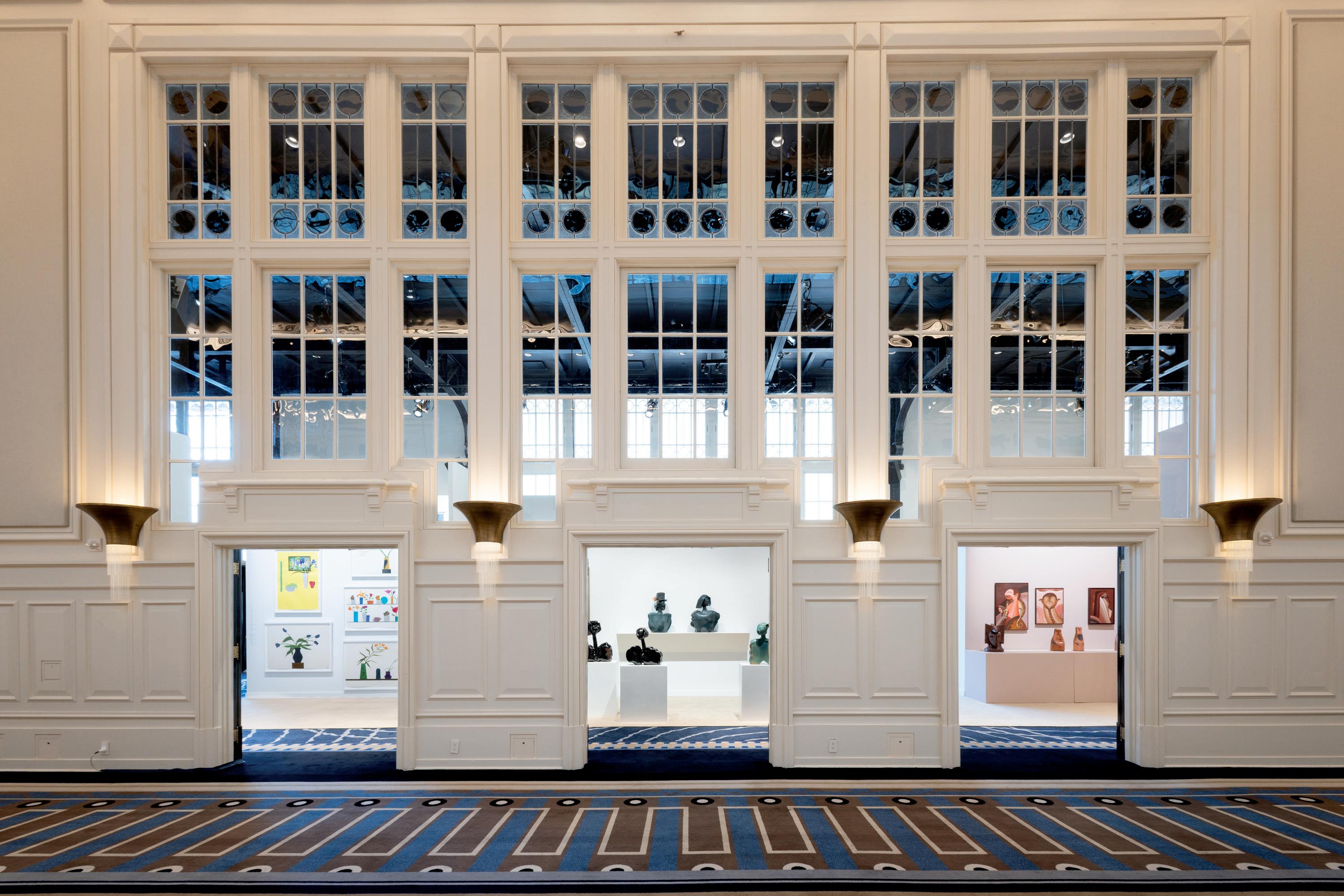
IT’S
BEEN A CRAZY FEW YEARS IN THE ART MARKET. WHAT HAPPENED? WHAT’S NEXT?
AND ELIZABETH DEE TO EXPLAIN WHAT’S GOING ON
like much of the planet, the art world suffered a mighty tremor in 2020, that’s been followed by a series of after-shocks. The pandemic. The global recession. The political and technological turmoil. All of it has had an effect on the artists and collectors, galleries and dealers, museums and art fairs. Four years later, the ecosystem is different.
So where do we stand? To answer that question, Bollettino brought together a pair of trusted veterans to share their thoughts on what actually happened, and what we can expect in the future. Josh Baer is the founder of The Baer Faxt, an art newsletter which also includes an on-demand art-advisory consultancy. Elizabeth Dee, is the founder and curator of the Independent Art Fair. The conversation between Dee, Baer and our editors explores a variety of relevant topics, offering both long-term understanding and of-the-moment insights.
elizabeth dee: I was just thinking about all the changes that have occurred since 2020: a contraction of the market in contemporary art — less so in modern. And how artists, gallerists, and collectors are kind of adjusting to maybe a more sane environment than what we had been in since COVID — which was pretty insane. I’d love to hear your thoughts about that.
josh baer: COVID shocked everybody. In the art business, we all thought in March or April 2020, that we’d be out of business. Maybe never sell anything again. There was a panic for the first few months. Though anything people could do online was gonna be active. So there was a question of what kind of art was popular — as well as this desire to fill up the hours.
Small galleries that were living month-to-month have always been in danger. It’s like, how many restaurants that open, go on to fail? 90%? If you look through an issue of Art Forum from 30 years ago, how many of those galleries still exist? These cycles were inevitable. It’s not that things went from expensive to inexpensive, they went from expensive to less expensive. Some people then see that as a buying opportunity. I argue that it takes guts to buy when people are buying less.
ed: You unpack three really important trajectories that we’re seeing. One was that the COVID panic actually led to the technological revolution in the art market — where suddenly for the first time, galleries were selling art on Instagram, during COVID. That brought in a whole new generation of collectors, new buyers and people who maybe live in places that don’t have a major gallery culture. So you have upwardly mobile professionals and creatives all over the world who want to cross pollinate with this world and now have access to it. I think that created a general shift.
jb: The globalization of the luxury markets and art has been going on for about 40 years. It used to go sequentially to keep the art market alive. One season was the Koreans, then it was the Russians, mainland China, then it was the Middle East. America’s always been strong in that. Europe has always had its place. We have hit a wall where there is no new section coming in. People in technology came in, that was another group. We don’t have this new replacement. But what we do have is a new generation of people. That’s where the replacements come in, and technology is speaking to them in a language that they’re more comfortable with because you can do it at three in the morning in your pajamas. Everybody’s equalized in a way and that’s continued.
ed: I think that environment brought up a lot of emerging artists very, very quickly. The low-interest-rate environment, lockdown, people have more time on screens and looking at more artists. And then these artists also have their own platforms, therefore you’ve got this rise of talent around the world. With a buoyant marketplace, you had the supply and demand really kick in. In a very, very short period of time — I’m talking about 2020 to 2023 — you have artists that had maybe zero serious collectors or patrons, now having a waiting list of 50-100 people, and things suddenly popping up at auction.
jb: In a recession, there’s always a return to safety. I generally think there’s four types of collectors. There’s people who have been collecting all their lives, who are older, started in their twenties and thirties — that’s who they are and what they do. They’re never going away. Then there’s a speculative kind of thing, collecting as a business, particularly on the back of young artists. That fever is kind of
gone because it’s a very hard game to play, and you need real capital to do it.
Then you have people who made a lot of money. When I had my gallery 40 years ago, I would say maybe three out of the Fortune 100 CEOs collected contemporary art. And the others looked at those three people like they were ridiculous. Nowadays, all hundred of them have contemporary art in their house. That’s a fundamental change; it is considered part of the lifestyle. That’s changed completely. So, what happens when their walls are full? They stop.
And then there’s new money, and new money is still coming in from around the world, and a lot of it is generational. Their parents are dying and they don’t want the same paintings that their parents had, so they want to create a new experience for themselves.
The art world is tiny! I read that there’s 6000 people in the world who spend $100,000 a year on art. That’s nothing.
ed: What we call serious collectors , who might spend, on average, that amount…yes it’s a small group.
jb: I see a bull market coming that’s going to be driven in volume more than in price. More and more people are going to want to have something that means something to them, on their walls.
ed: I think with the market correction, we’re in a more sane environment where I actually think there’s some health to it. Not every artist that’s talented that has a show in a New York City gallery has to be sold out. Not everything deserves to sell. It opens up the question of something that we had been missing in this really frothy period, which is, “Is this good?”
jb: Now it’s up to the artists to make art that’s good enough for all this. That’s the bottleneck at the moment. There’s not enough great art being made. No one wants to talk about that.
ed: When you’re just feeding the machine, you don’t really have to be that self-reflexive about quality. Now, the machine is at a more human cadence. So artists should really be thinking twice before they let something out of their studio, and they should be criticizing it.
jb: I would say collectors need to think about how they are getting their information, because there’s over two million artists in America. There are more artists living in the New York City area now than lived through the entire Renaissance. So it’s hard to expect that there are 20,000 interesting artists in New York. But if you went to a thousand galleries, how would you figure out where to go or what to see, what to choose? That becomes difficult if you’re interested in those 10 artists. I’m an elitist, so I’m interested in that, but should the system be supporting all two million? It’s very hard to figure out how to get your feet wet. Who do you trust?
I say try to narrow that down: Which galleries are the most interesting? Which curators at which museums are the most interesting? Which art fairs are the best fairs, where you’re not wasting your time? Which writers are doing the most interesting things?
ed: This is the talent pool, this is the editing function that brings things in, an ability to pinpoint quality, so that a collector is looking at a range of already pre-edited quality.
jb: People pooh-pooh art advisors, of which I am one, but our job is to really say, “We’re working full-time, on how to edit down things that you might love. Because there’s no way you can consume everything.”
ed: And our job as curators is to bring that story forward of how we think about a canonical artist in the history of art, and then be able to bring women artists, or artists from other countries that were under different regimes which kept them from being part of the larger conversation between 1900-2000, to be able to bring those very well-deserving artists to more critical and market attention and doing that at the same time. This is where communicating the story matters so much, because there’s so many threads in the history of art that need to be told. These artists were consequential to their time.
We know who the “The Winners” in 2024 are. But “The Winners” in 1910 were different. That was a different list. That’s what makes art exciting. I love that I’m always learning. I’m so curious about why we are missing it? Is this story only being told by the winners? How do we actually get it? And I think what we are saying here is that ignorance is the enemy. We need to be more well informed. And yet we have all this access. jb: We’re over informed, but we’re under-educated. And the Internet creates this false narrative that you know everything, but it can’t replace standing in front of a picture. Post-COVID, people want to stand in front of something. Because you can’t appreciate an Agnes Martin on a laptop. Something that I’ve been thinking about is that we make this assumption about “the universal.” We assume that Edward Hopper means the same thing in America as it means in Saudi Arabia as it means in Beijing. And that’s probably a faulty assumption. Or we think Agnes Martin, or lyrical abstraction (because that’s just an emotional experience), means the same thing to somebody in Pakistan as it means to someone on the Upper East Side. That’s a Western mistake, thinking that there’s only one interpretation.
In that sense, the question is, how do you have something that’s universal versus something that’s purely provincial? That’s the challenge for the artist to make something. How do I make something be appealing to different cultures, but in different ways? Ai Weiwei is a very interesting artist. And I’m sure his work means something different to the Chinese than it does to an American, but it does speak in a way to many, many parts of our culture. That’s for the artist to challenge. How do you find the languages to communicate?
[New patrons are] not interested in [art genres such as] impressionists and contemporary, but they are interested in a portrait from the 1600s working with Cindy Sherman. Old masters are hanging alongside contemporary art. People are interested in both. There’s a desire for deep vertical learning, and all masters are about deep vertical learning. That appeals to people. They’re interested in things that connect in a different way.
